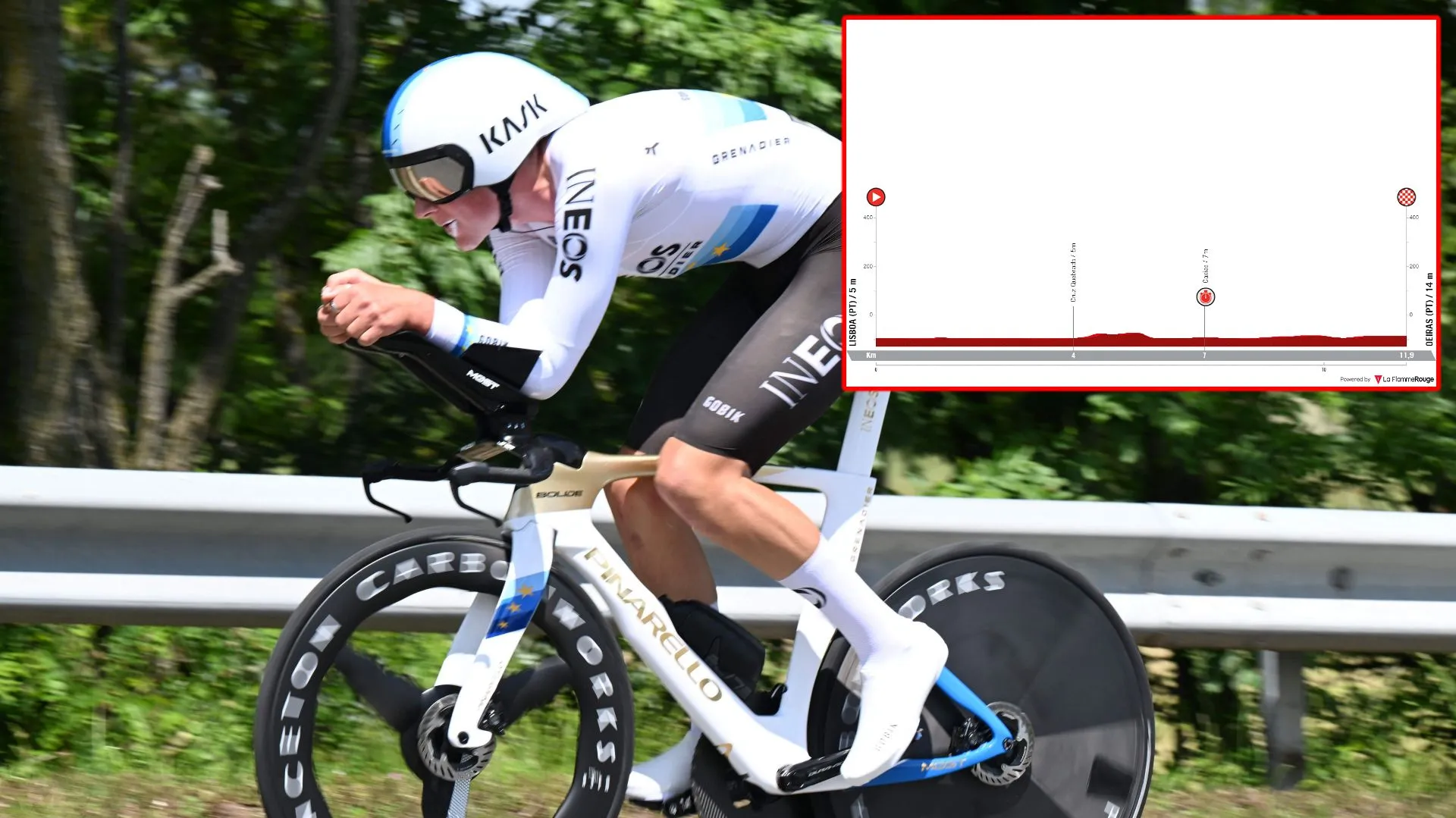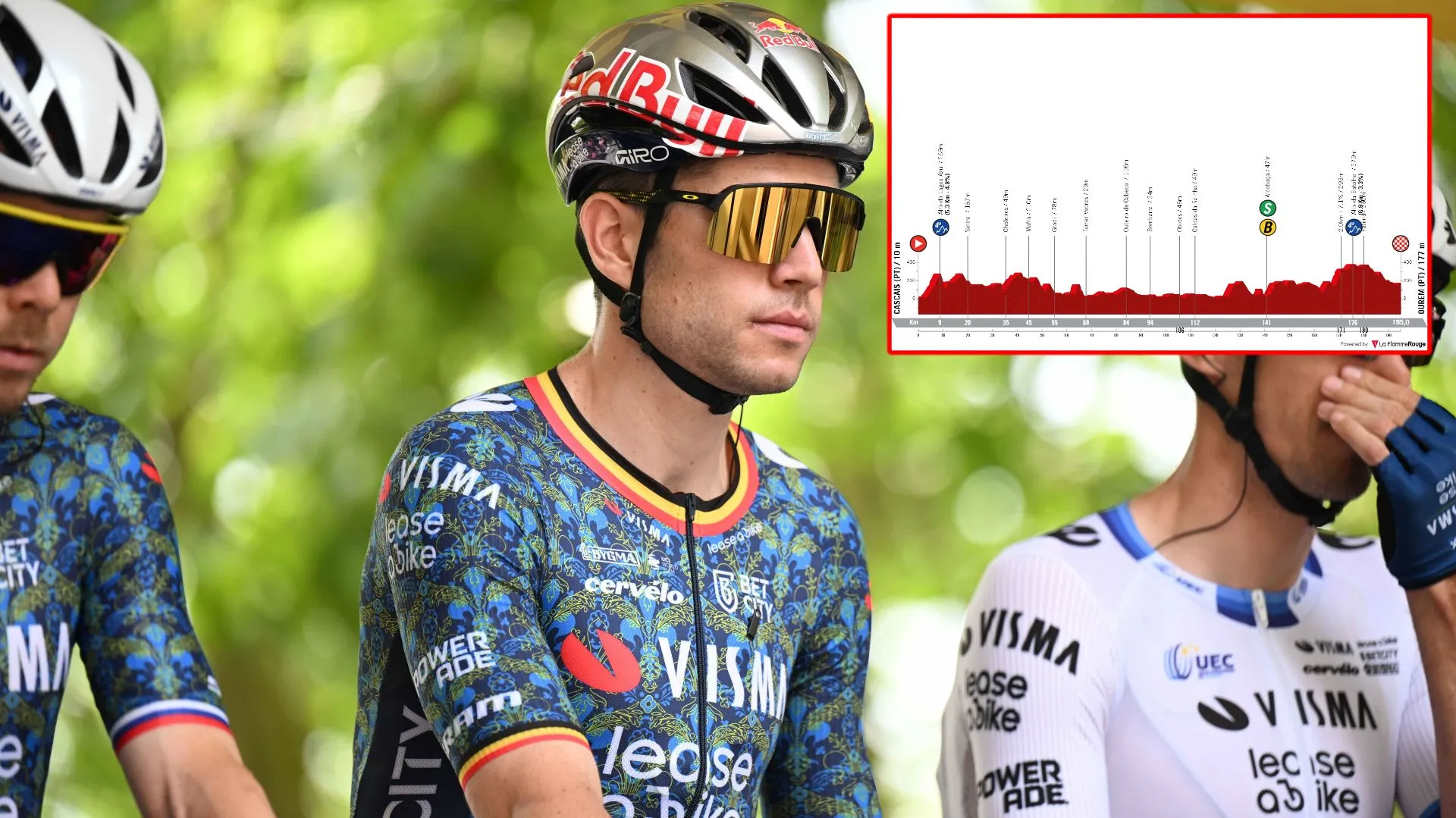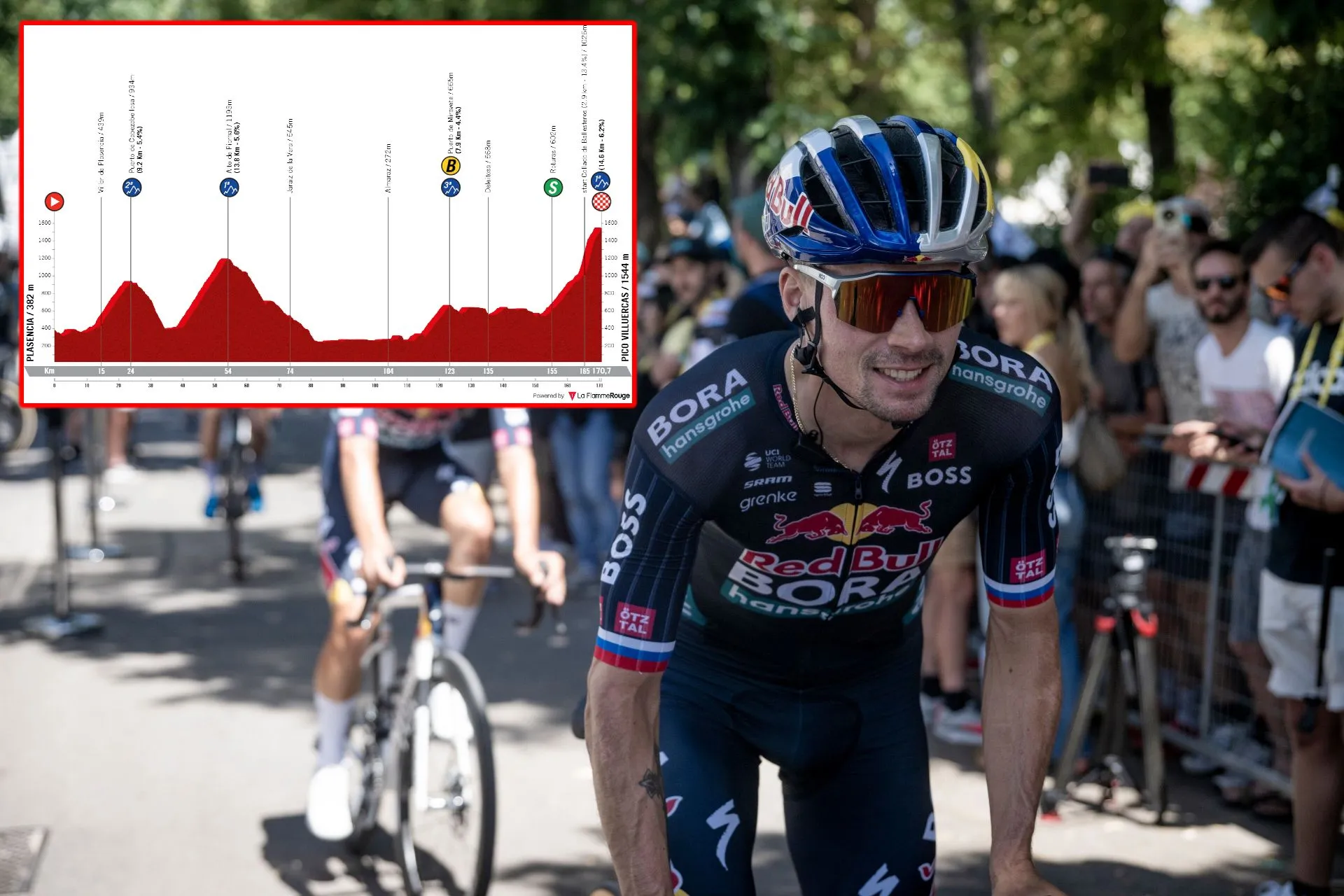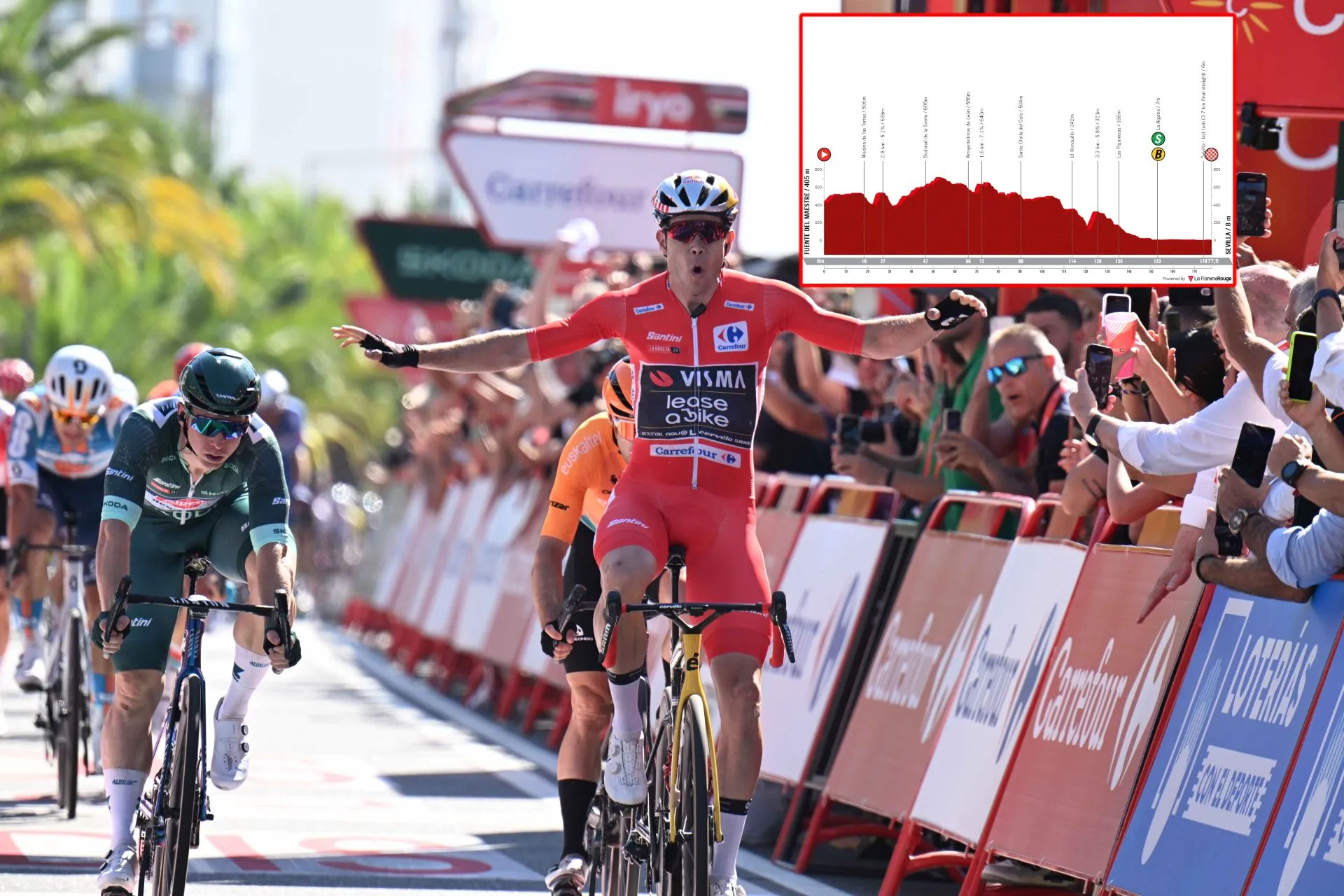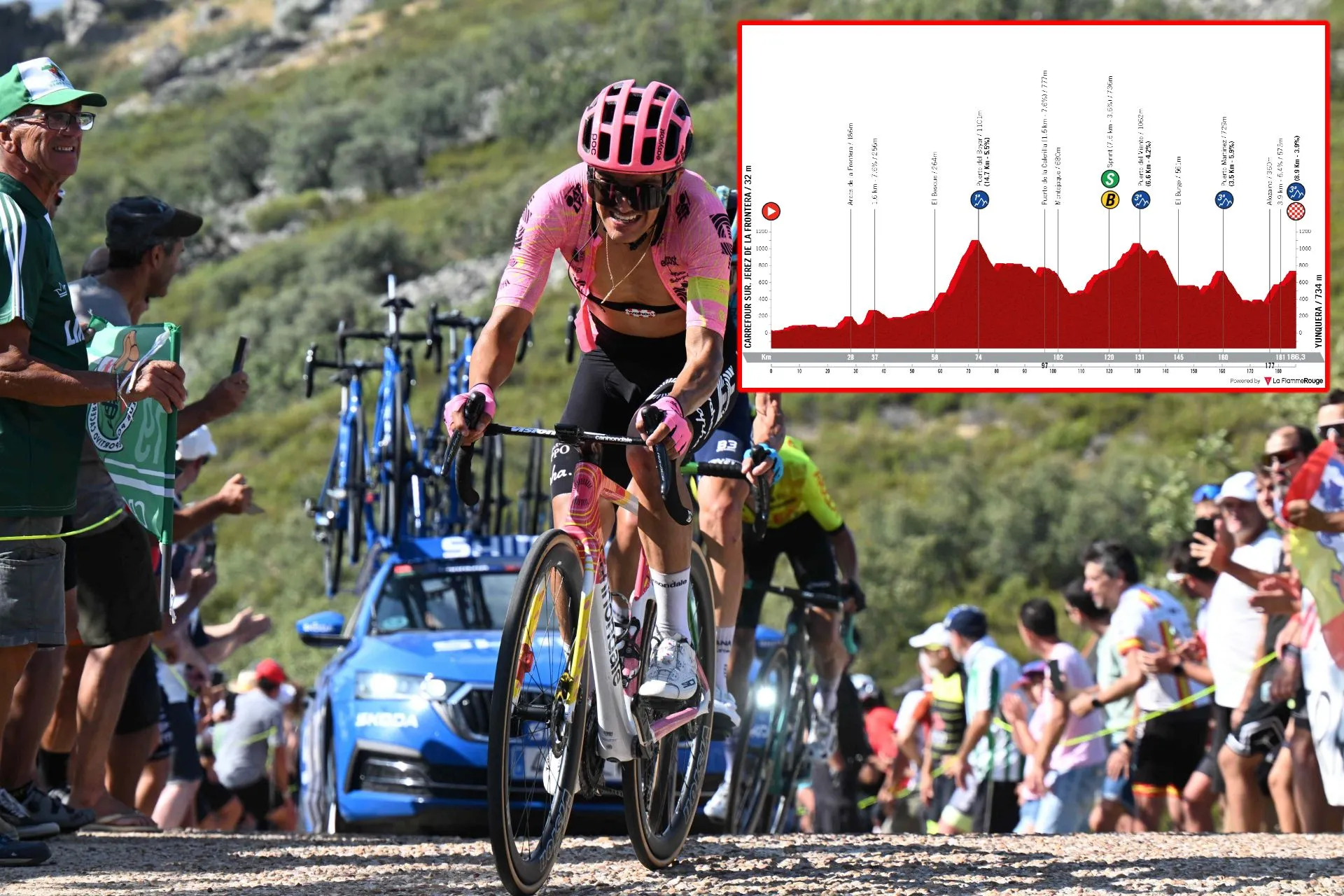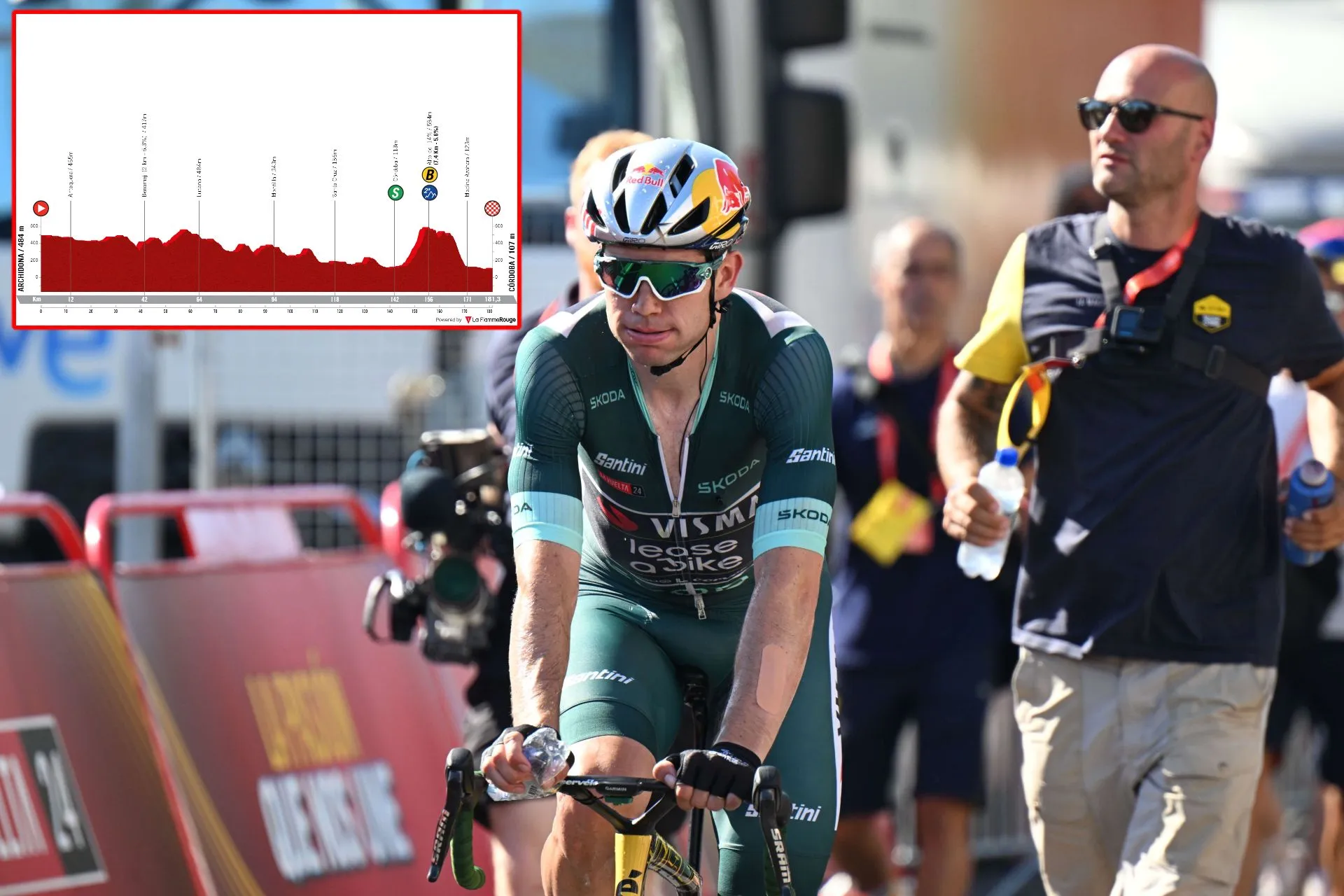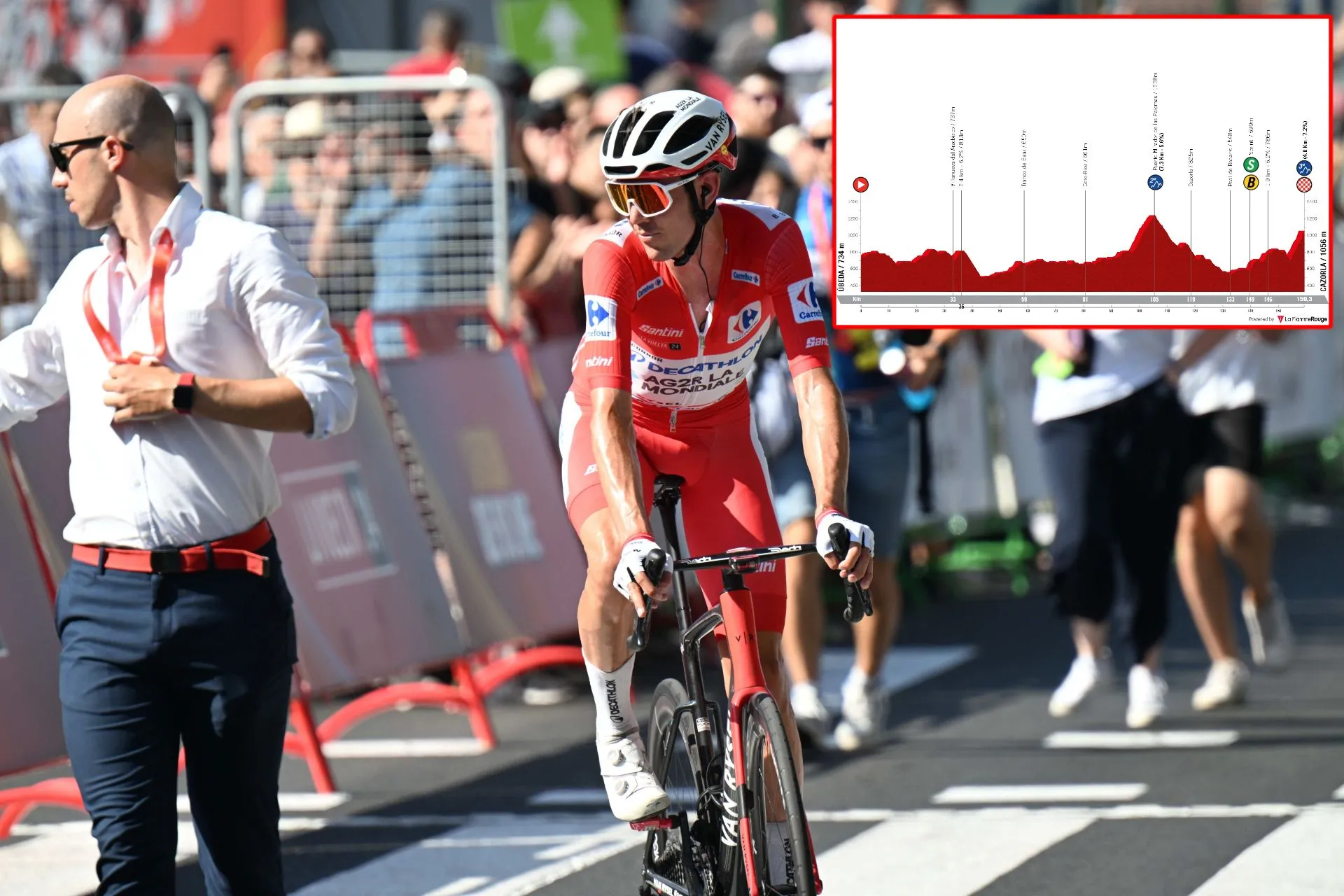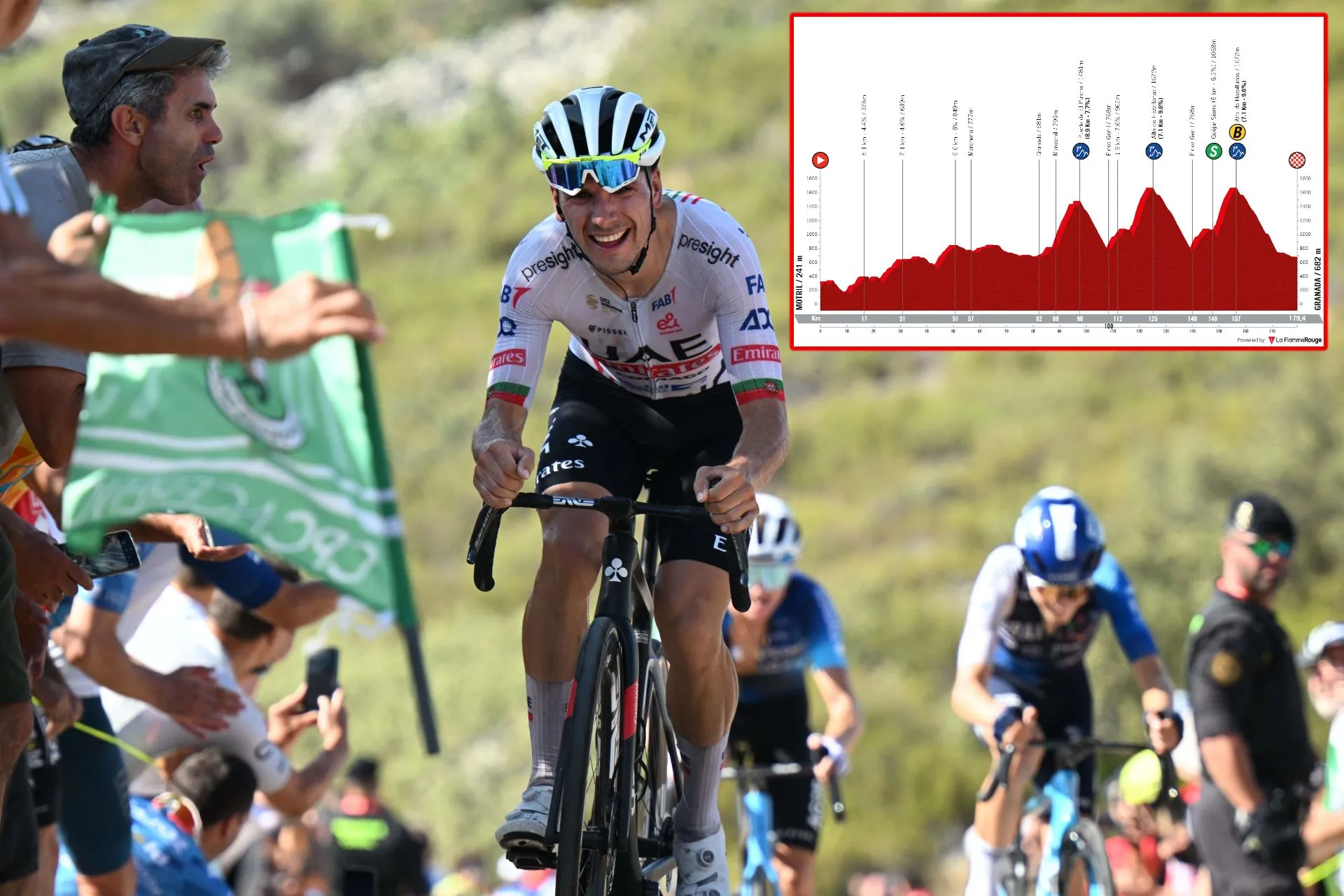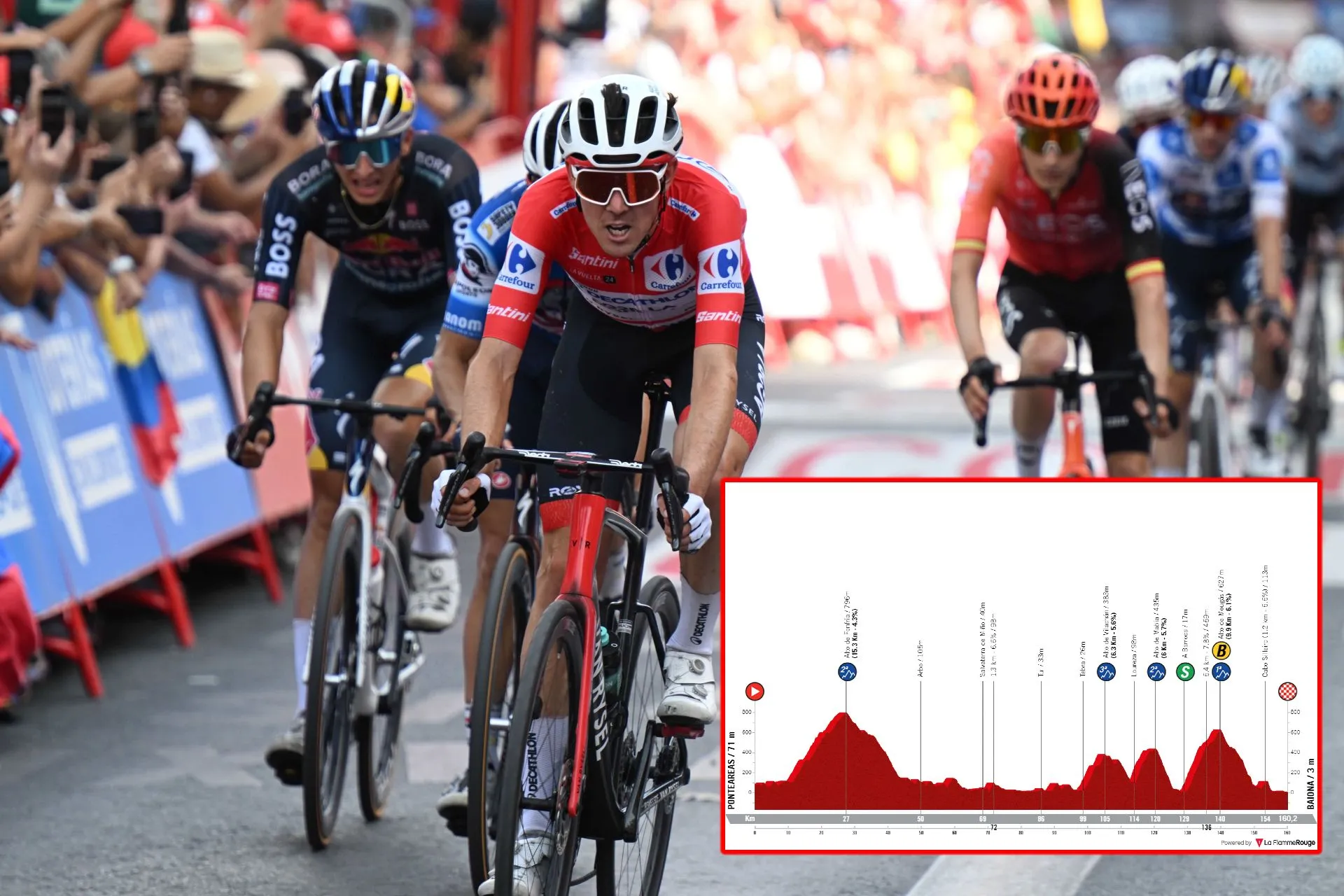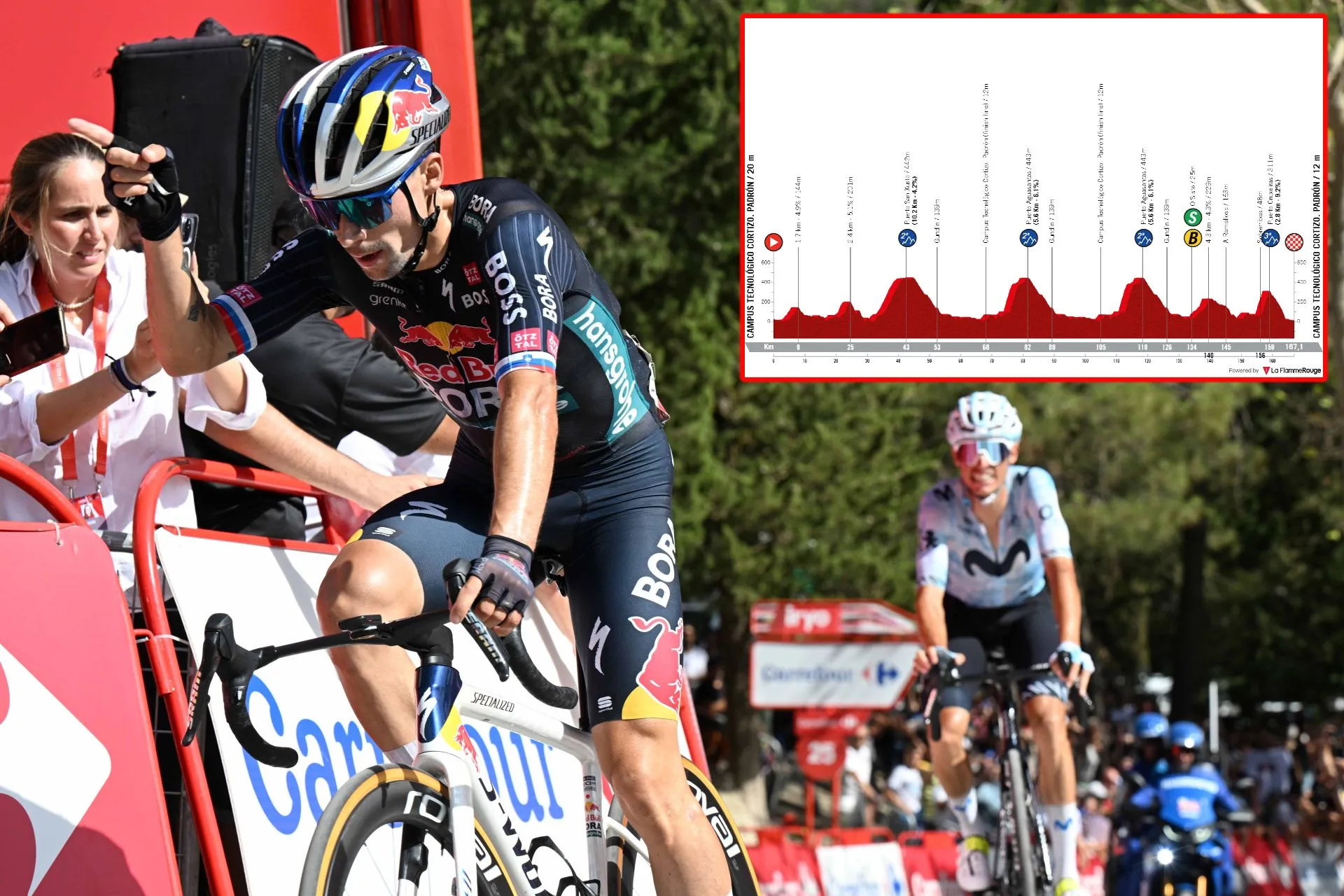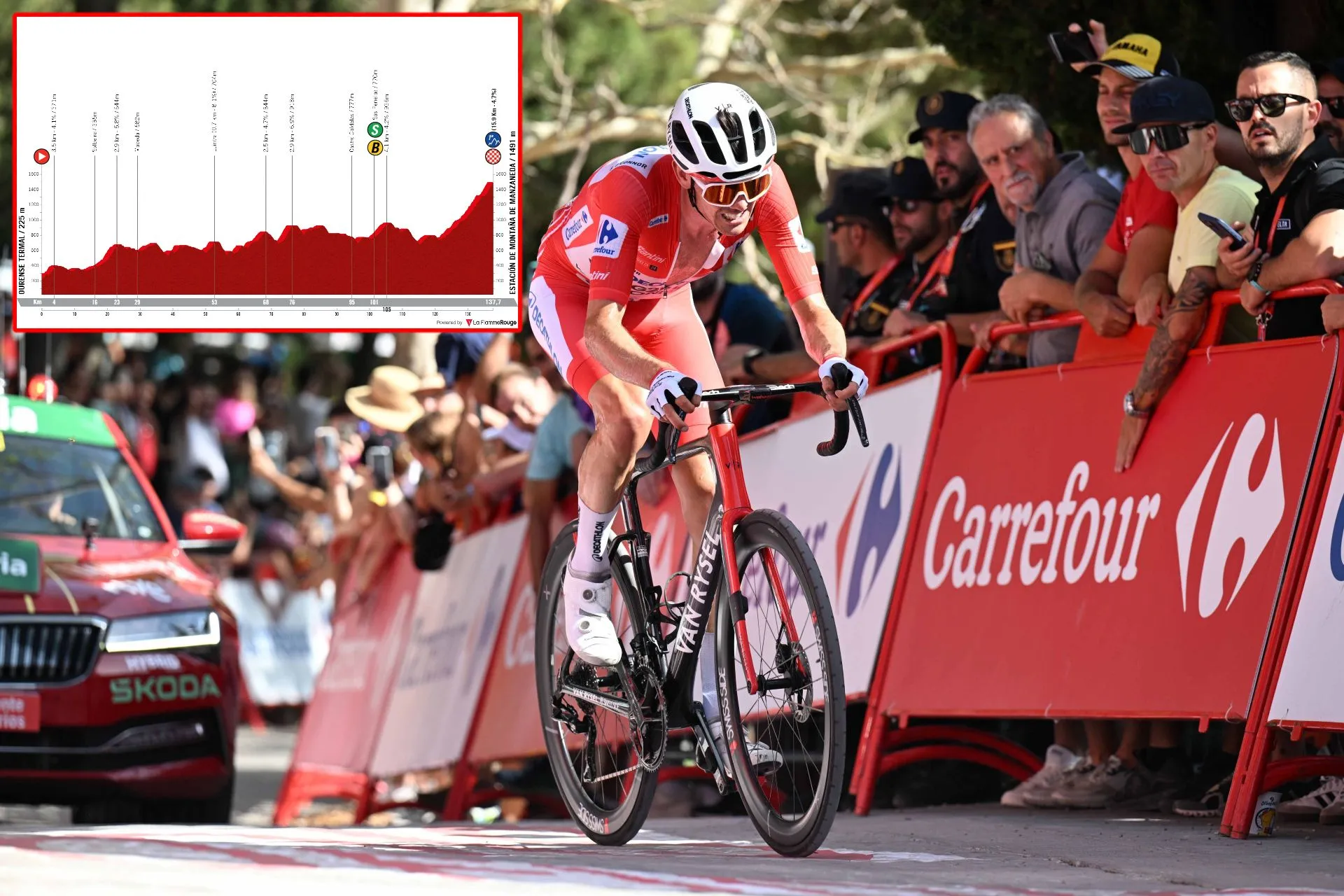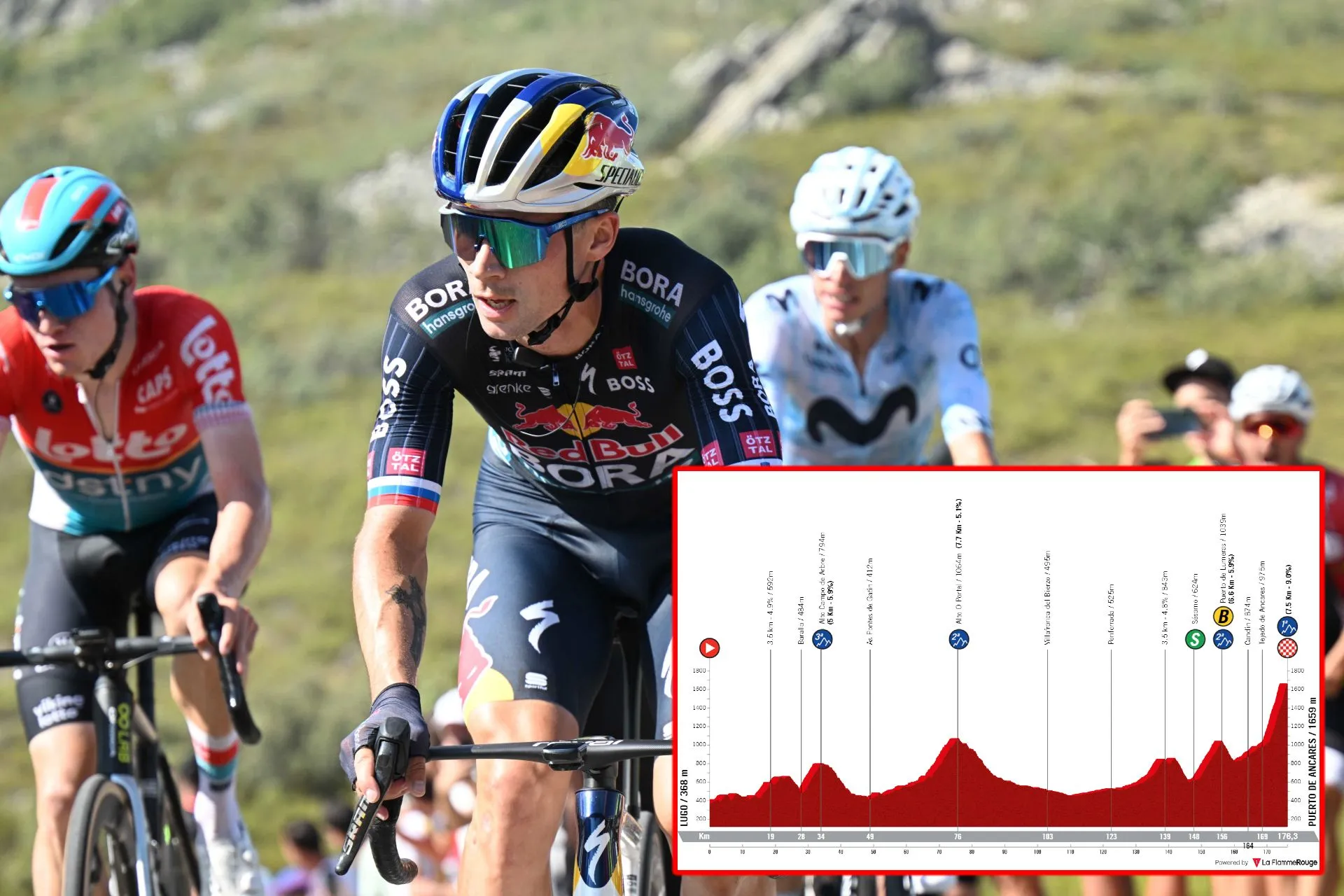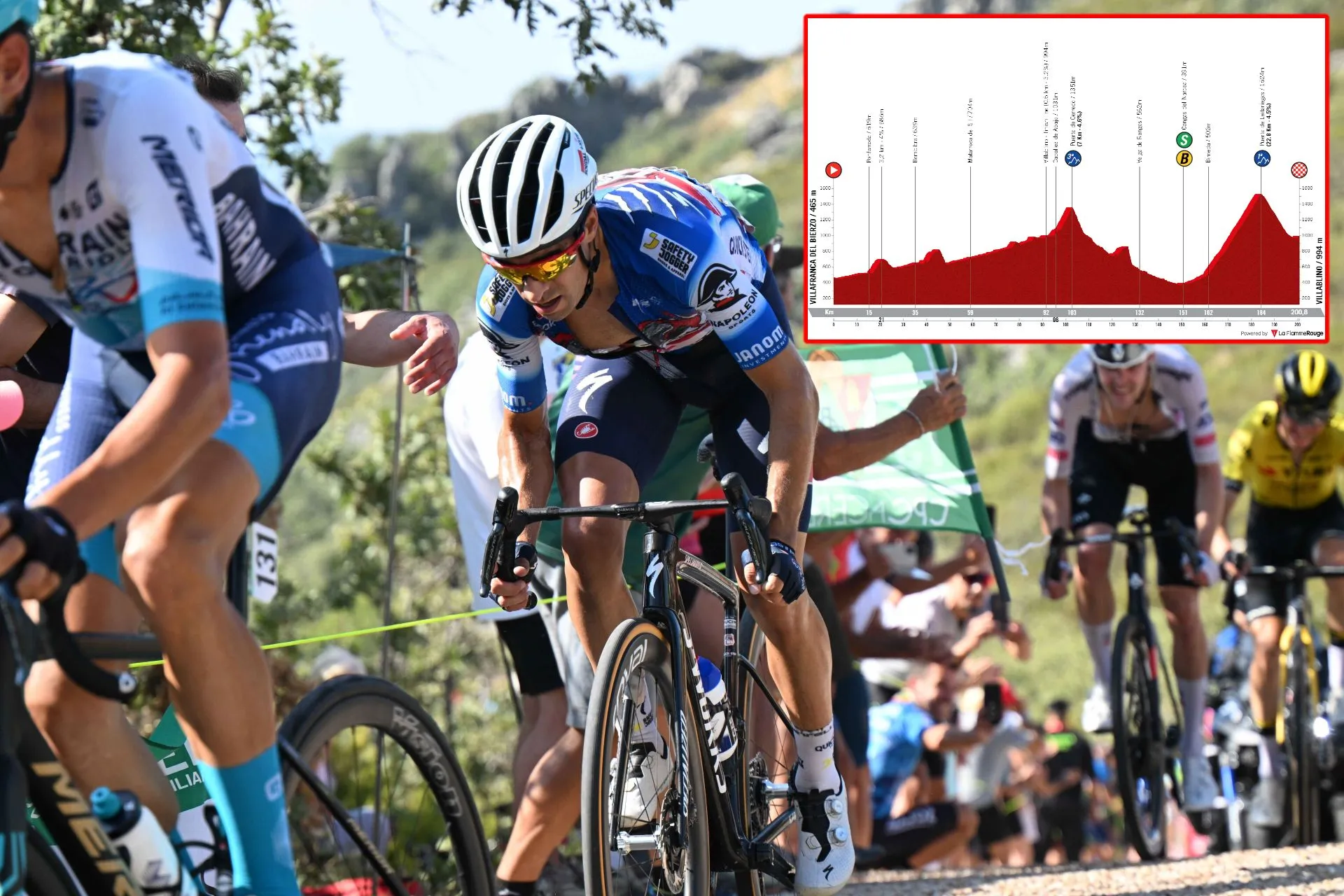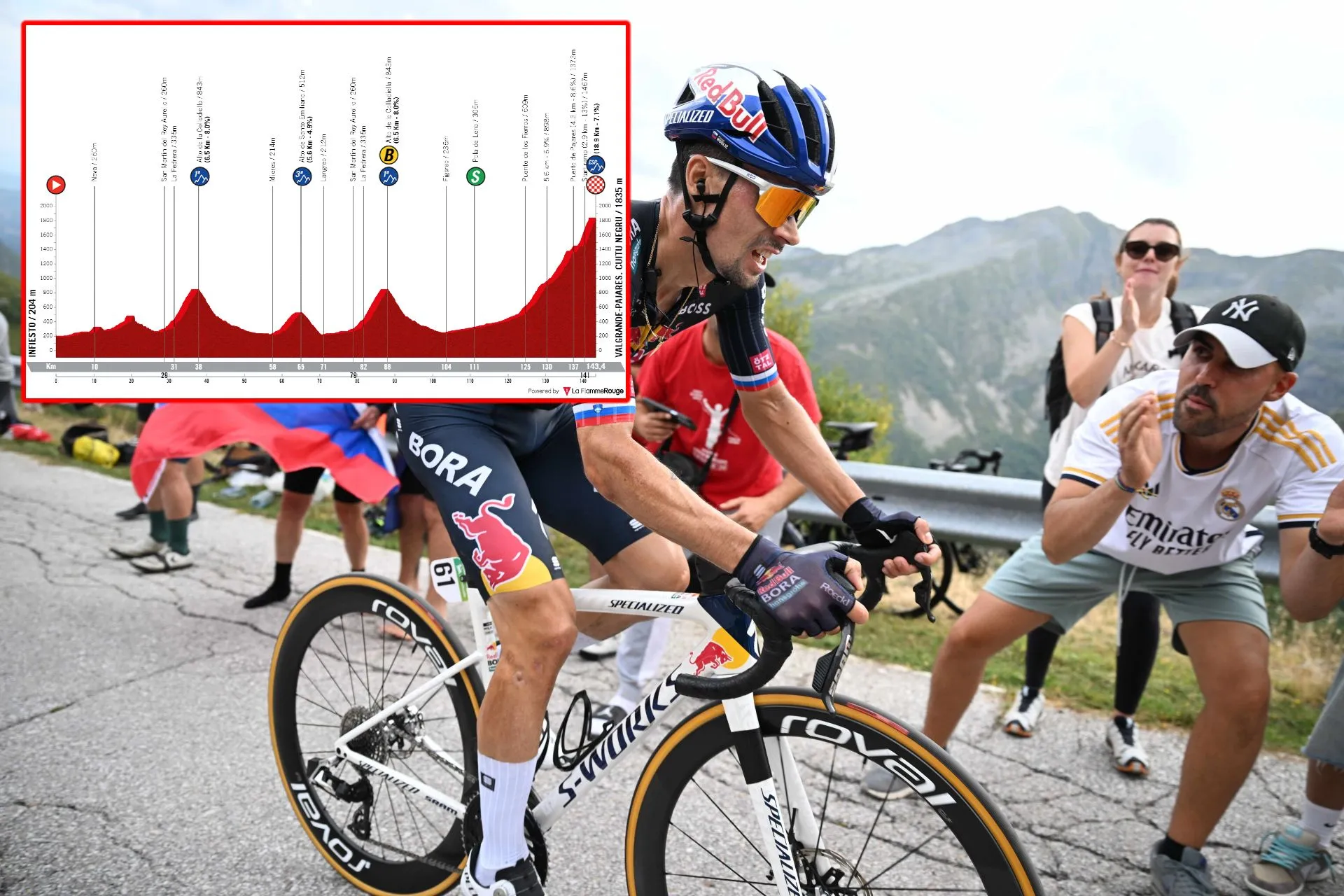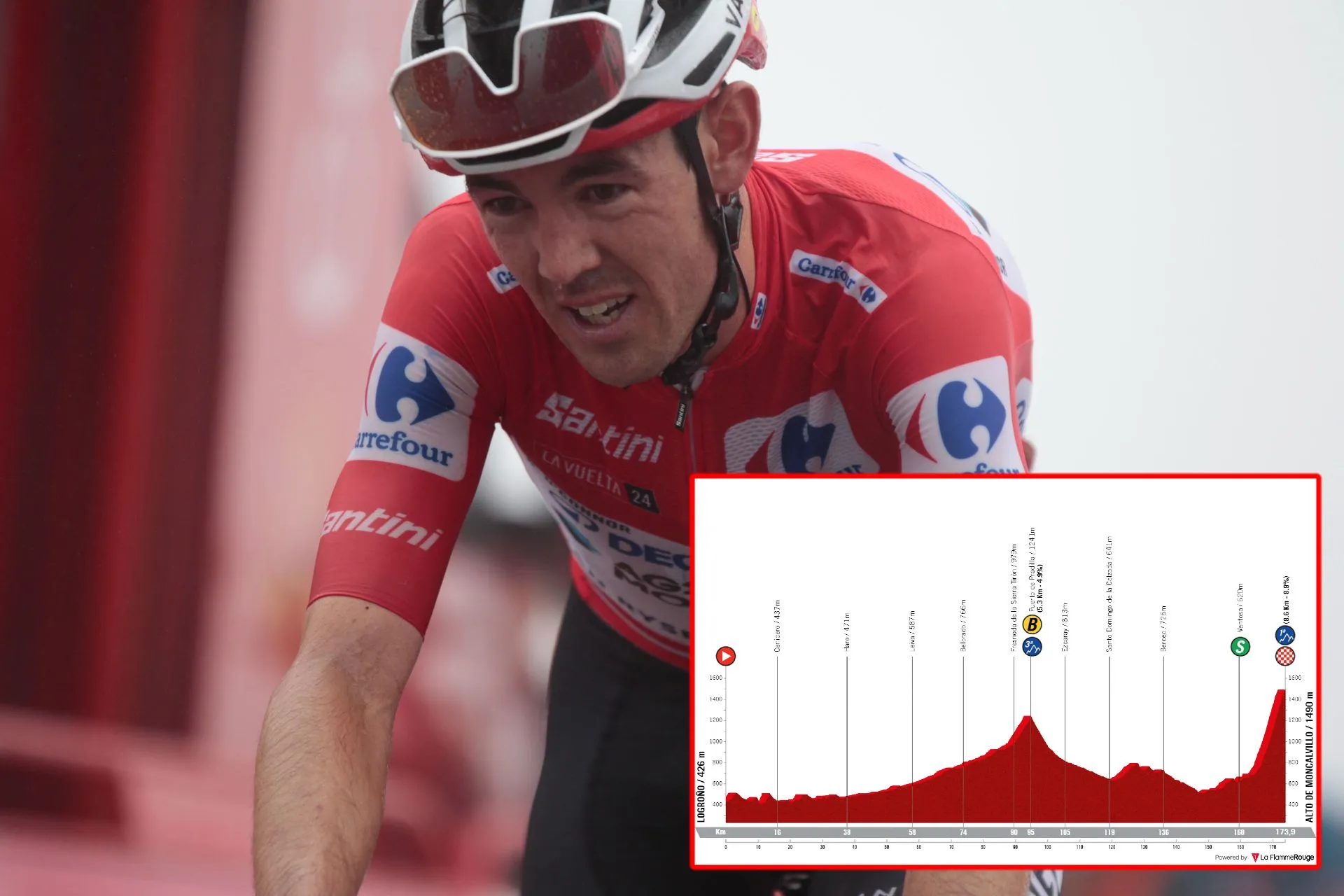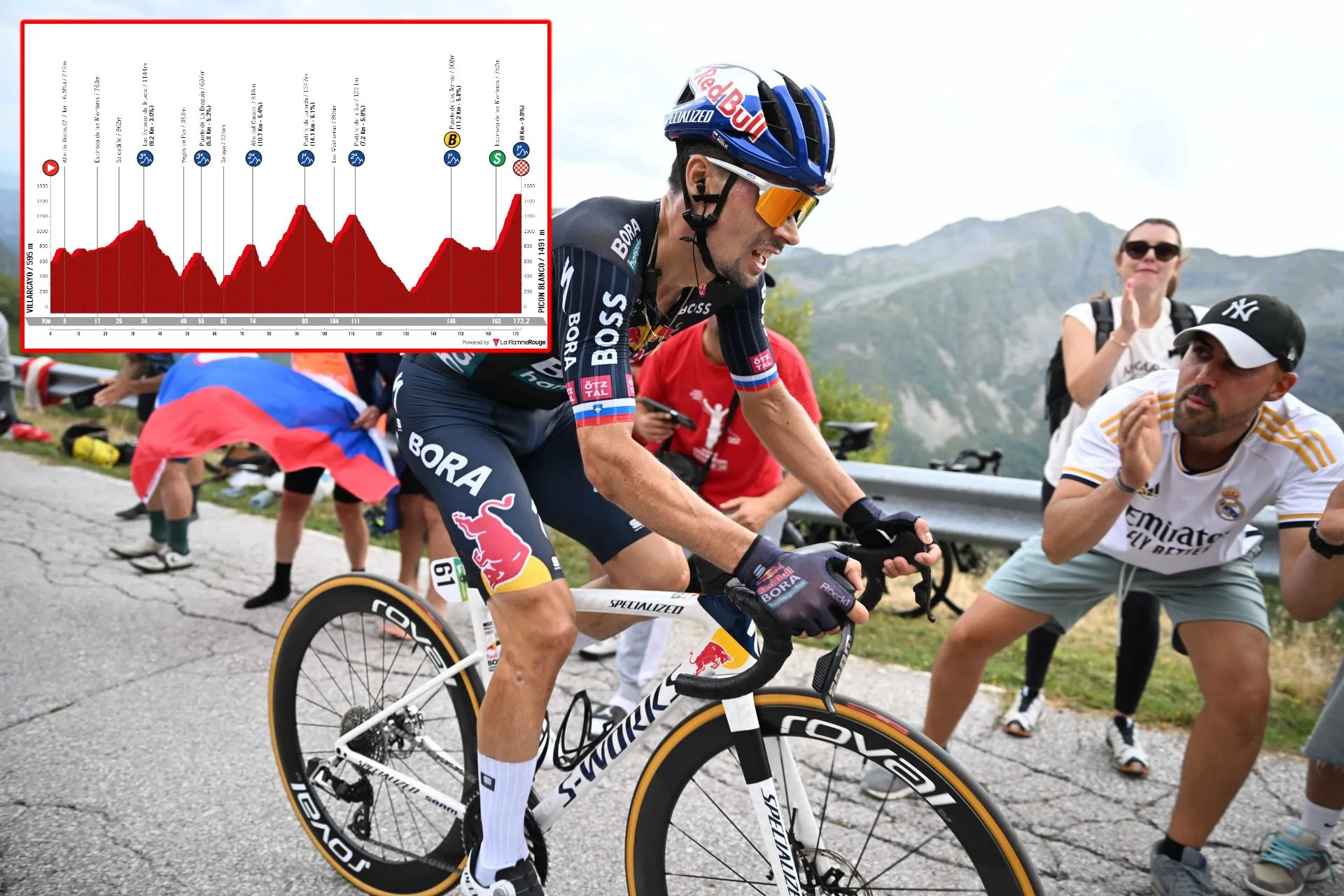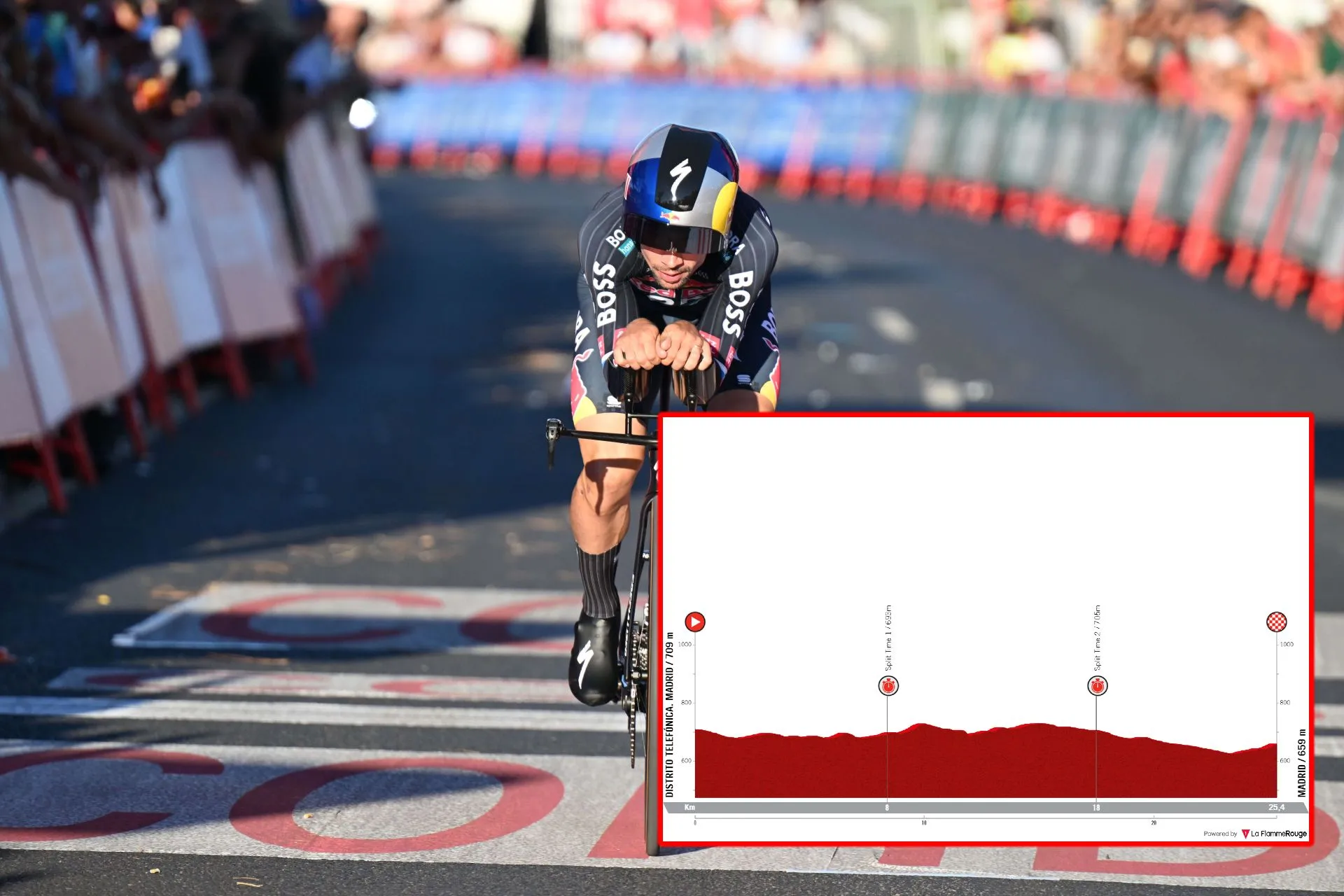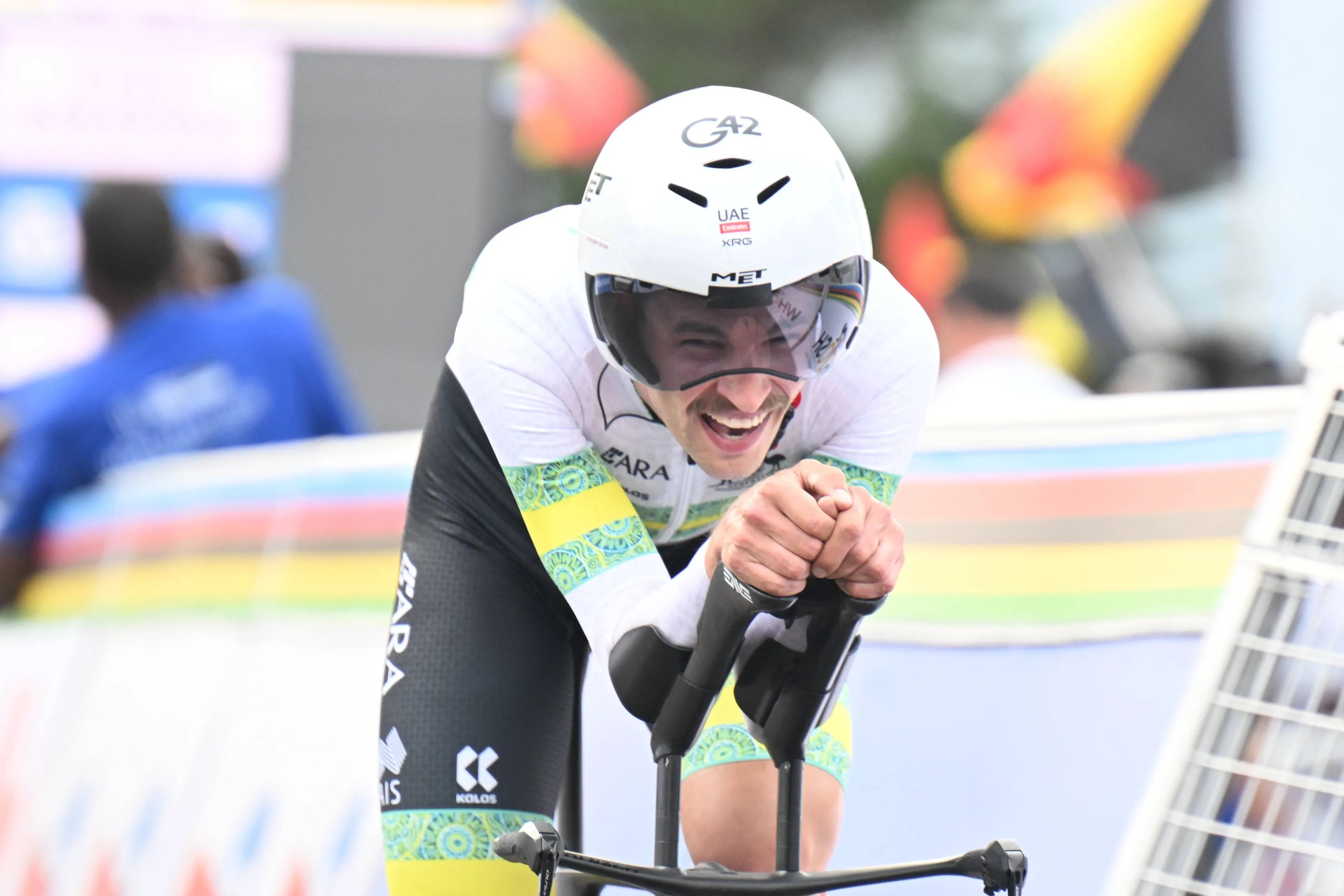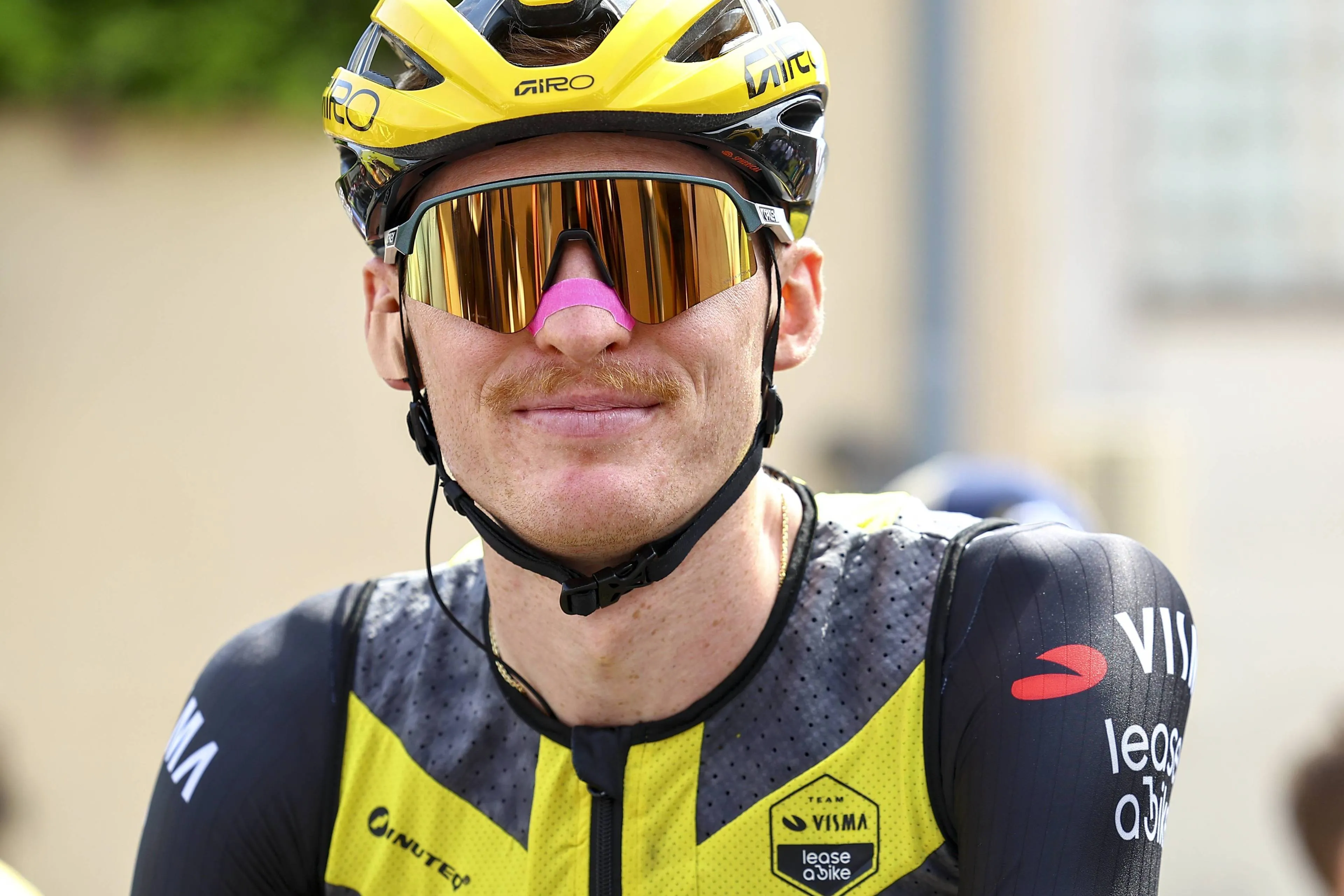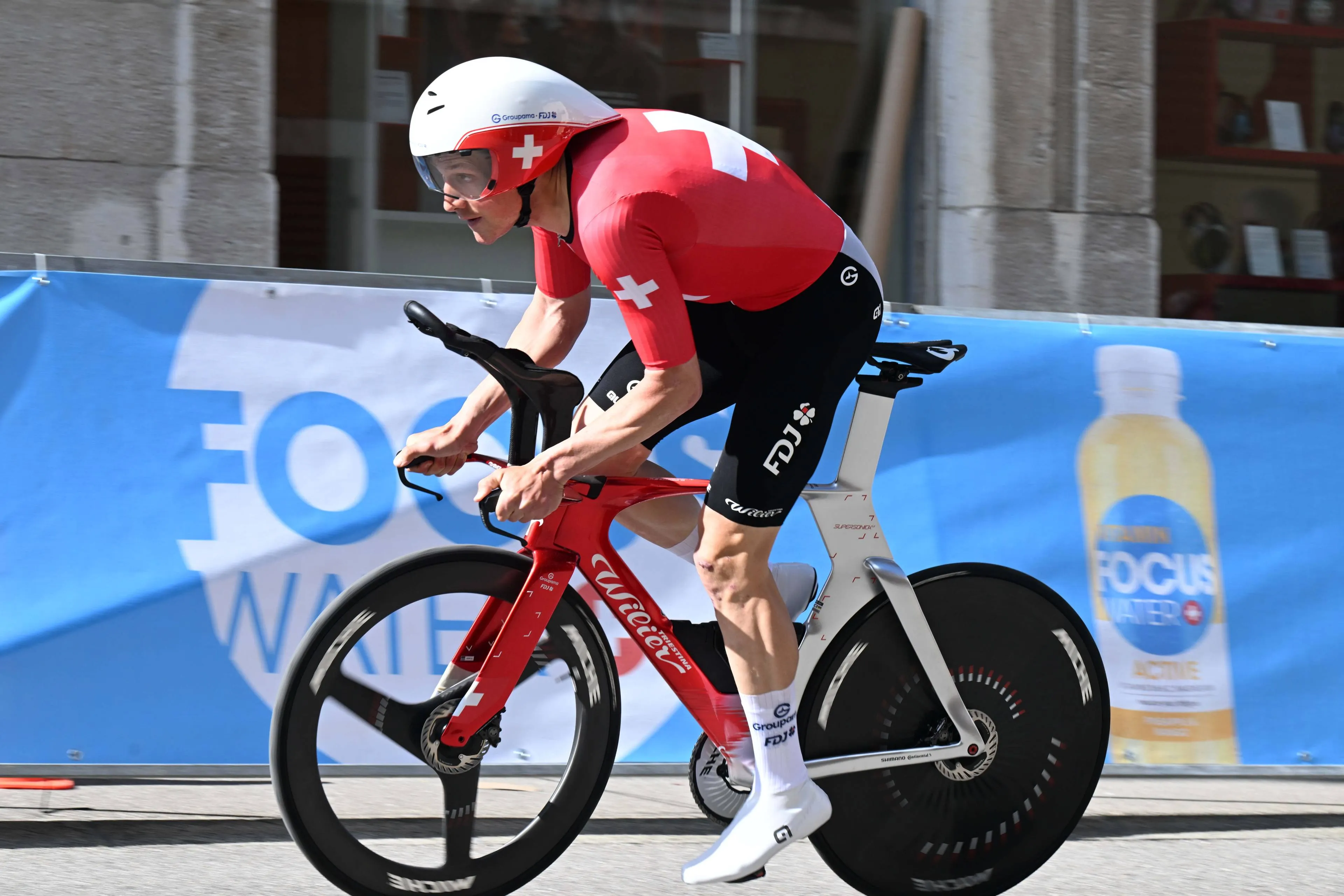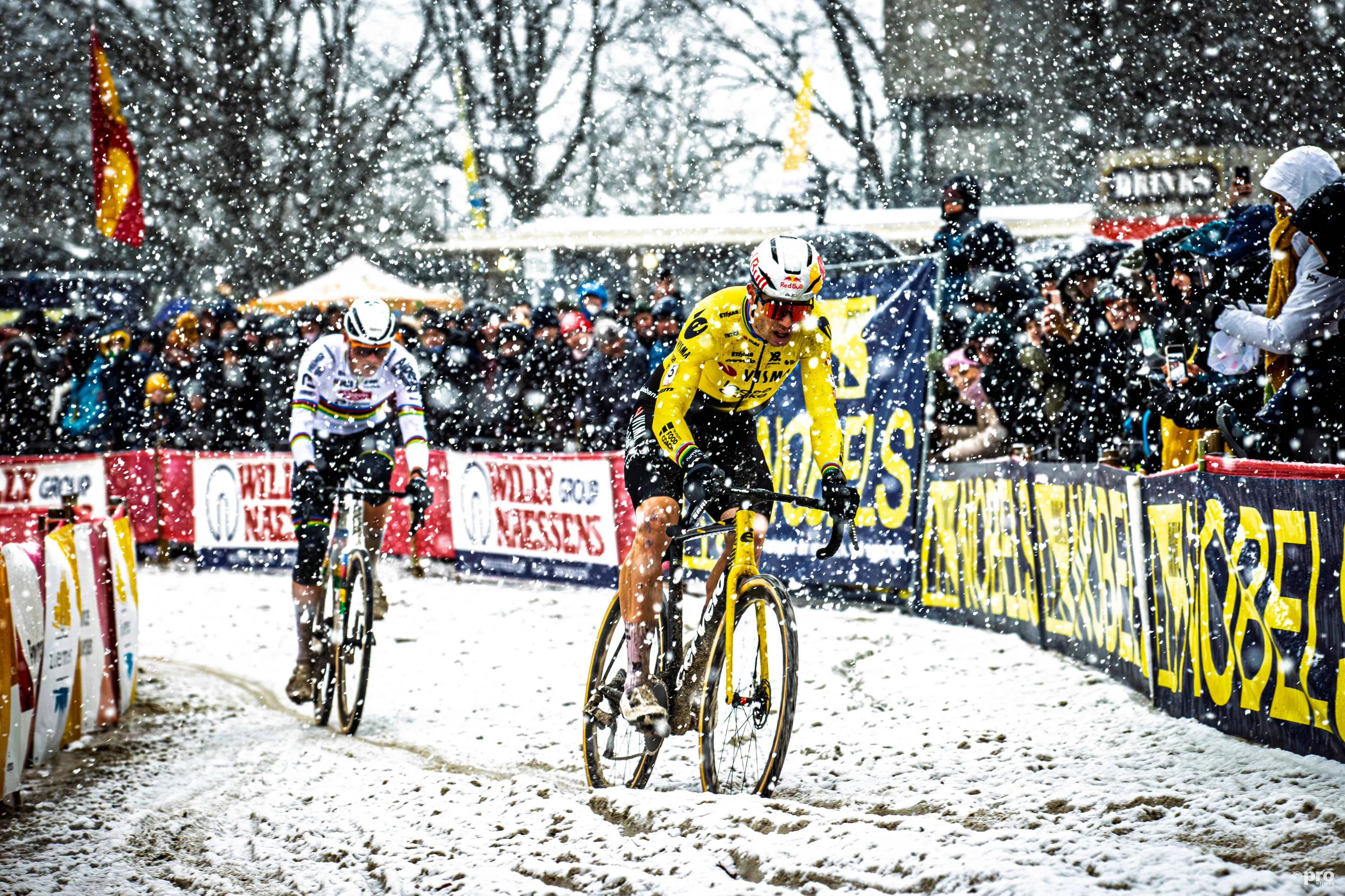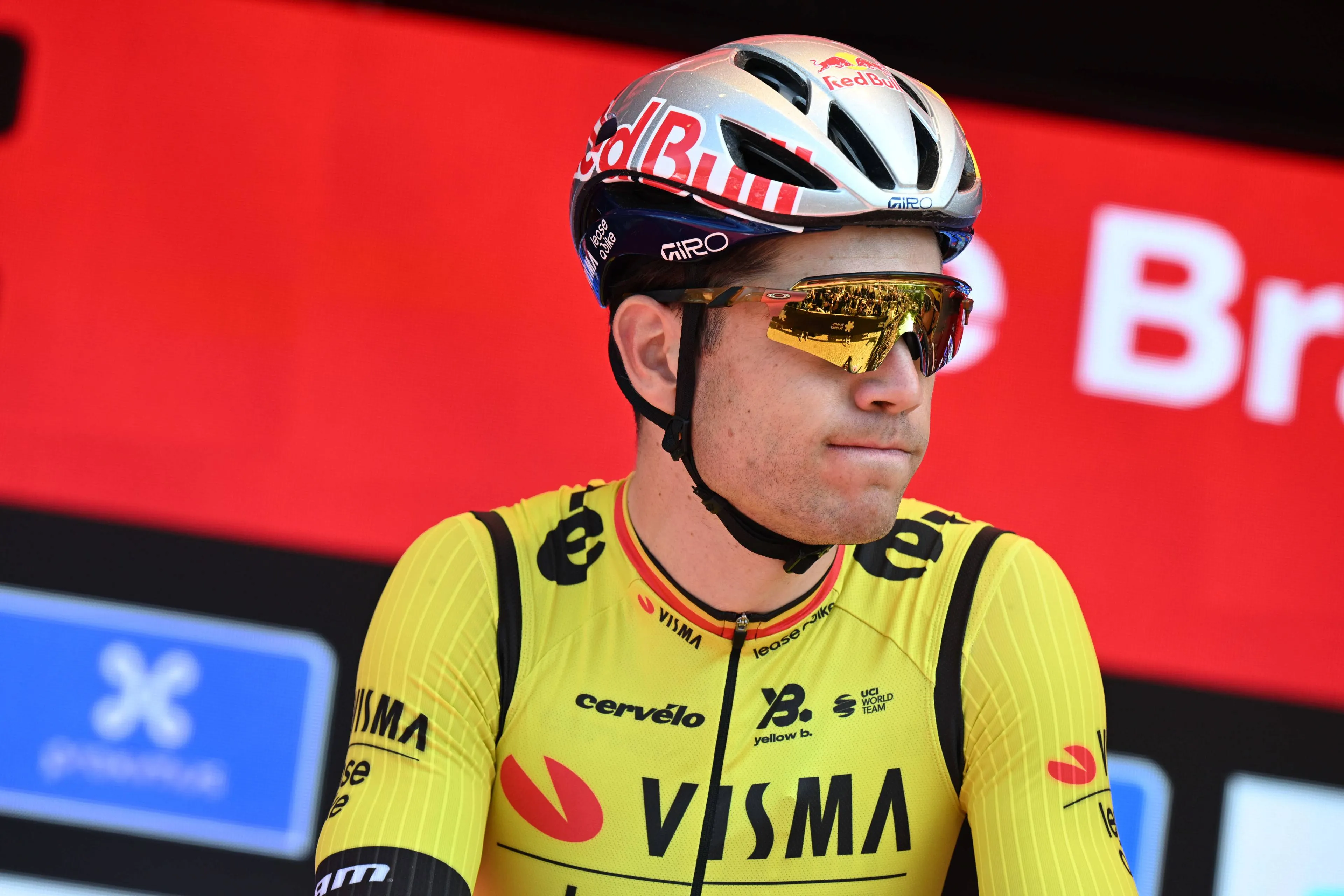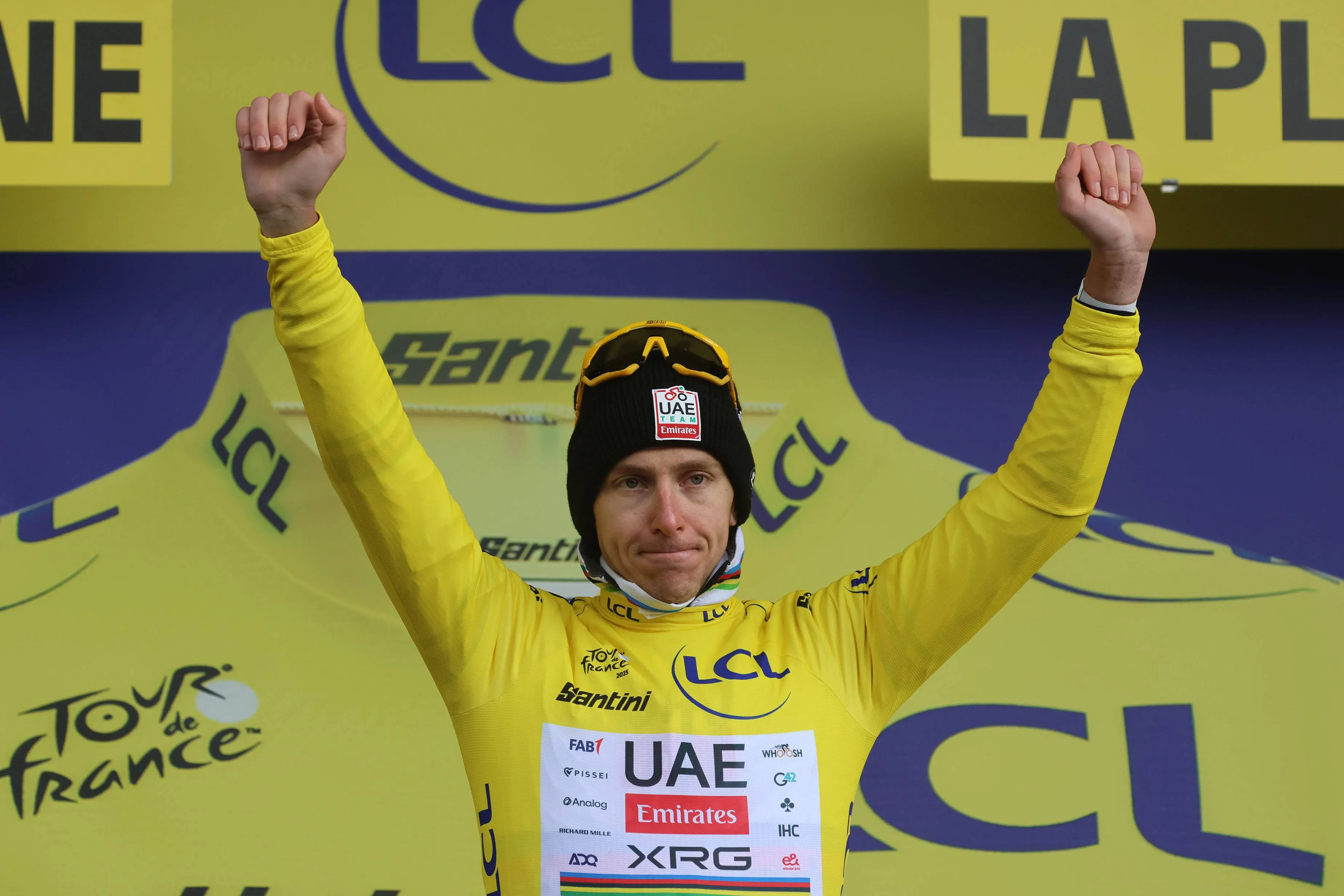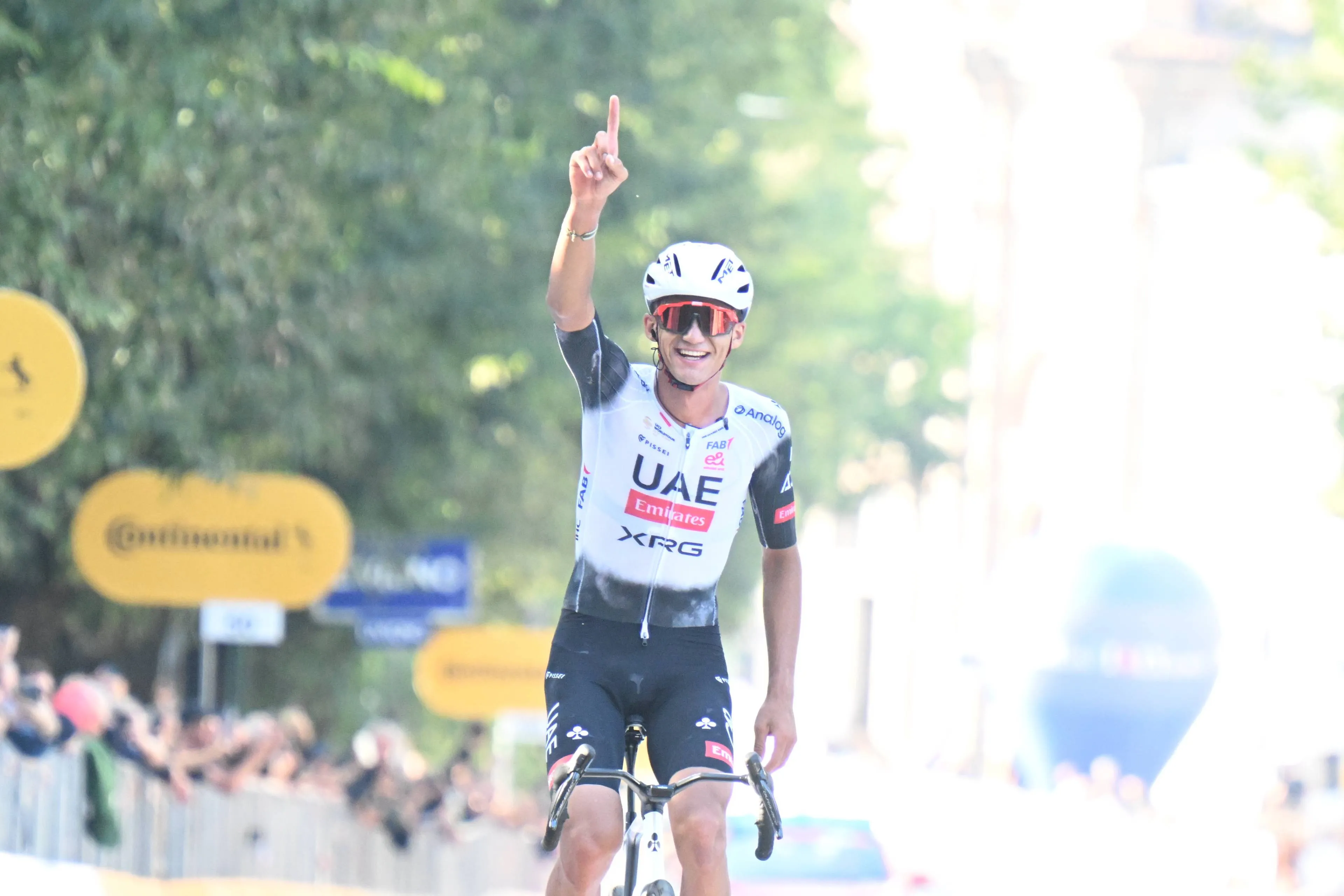Profiles & Route Vuelta a Espana 2024 - Portugal start; 9 summit finishes; return of Cuitu Negru
CyclingMonday, 19 August 2024 at 14:01
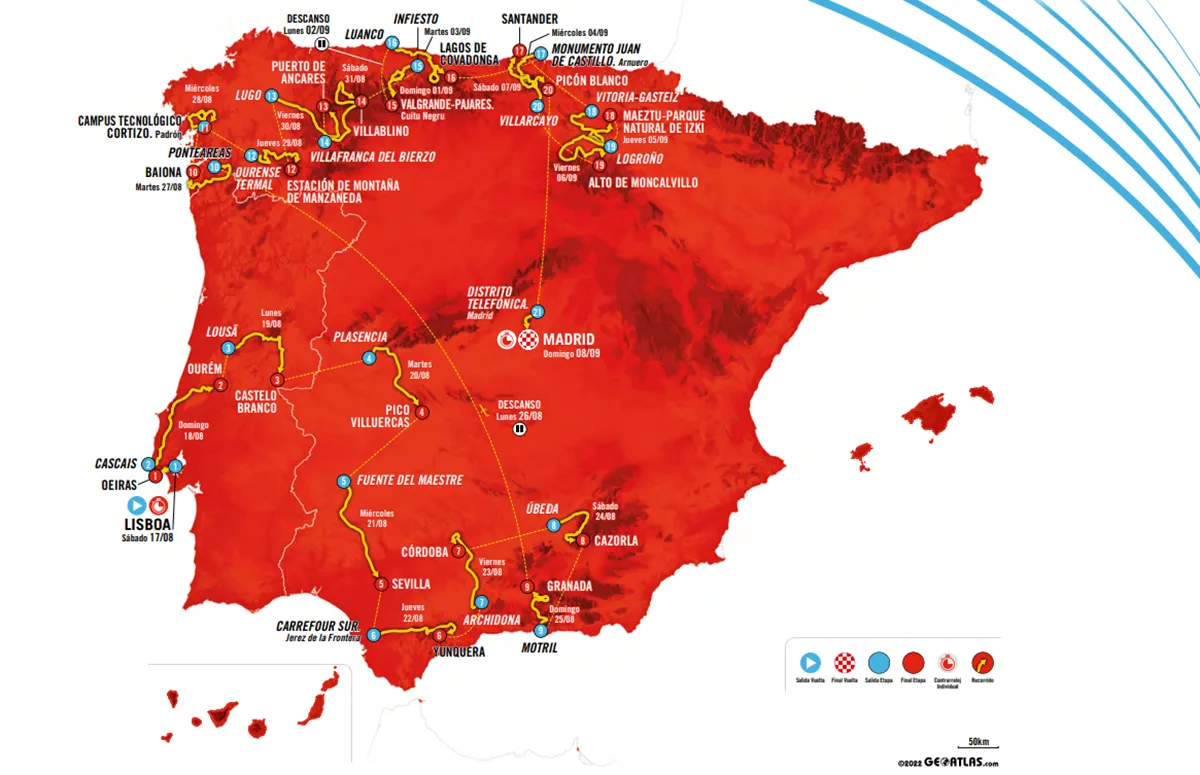
The Vuelta a Espana starts on the 17th of August and finishes on the 8th of September. It is the final Grand Tour of the season and, like every year, it will feature a luxurious startlist packed with climbers, sprinters and classics riders looking for their final opportunity to win big in a Grand Tour. We take a look at the profiles of all 21 stages.
The route will be 3265 kilometers long and 22 teams will race for the biggest prizes over the three weeks.
Read also
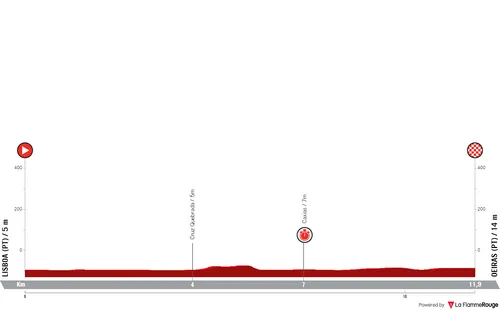
Stage 1 (ITT): Lisbon - Lisbon, 11.8 kilometers
The race starts off with an 11-kilometer long time-trial in the capital of Portugal: Lisbon. It is a completely flat and straightforward time-trial by the coast where the specialists can take advantage of their specialty to take the first red jersey, whilst the GC fight begins right on day 1.
11.8 kilometers exactly, starting in Belém in the heart of the capital. Big crowds are expected to fill the entire route but despite the urban start, we will still get to witness some nice landscapes throughout the effort where there should be no braking, no cornering, just a flat out effort from start to finish without rest.
Read also
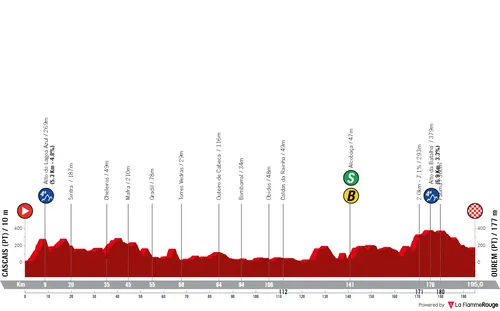
Stage 2: Cascais - Ourém, 195 kilometers
Stage 2 will start in the outskirts of Lisbon in the city of Cascais and finish in Ourém. A first opportunity for the sprinters but as is traditional in Portugal, there will be plenty of small climbs and likely a lot of heat making it harder for the fast men.
2600 meters of climbing make it well, a regular sprint stage around Portugal to be quite honest. The day has right in it's first kilometers a fourth category climb which is around 5 kilometers at 5%. This will see attacks for the KOM jersey but possibly a few riders dreaming of an opportunity at the red jersey. The whole day is packed with tiny ascents and false-flat roads. In the final kilometers there will be some more climbing.
There's a 2-kilometer ascent at 7% summiting with 24 kilometers to go. Shortly after the riders crest the second fourth category ascent. There will then be some descending into Ourém but the roads are not technical, it will make it hard for a late escapee group. A bunch sprint will in any chance be the most likely scenario. Not a technical one, the final 1.5 kilometers are somewhat uphill - the hardest being at the entrance of the final kilometer. The final meters will have a 3% gradient, definitely not a regular one.
Read also
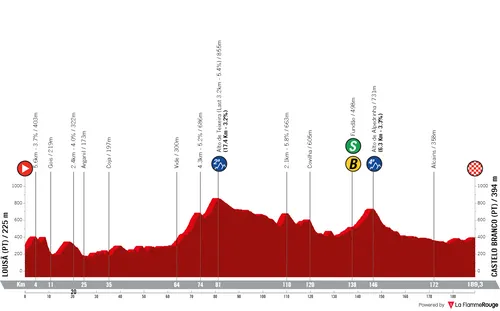
Stage 3: Lousã - Castelo Branco, 189.3 kilometers
The third day of racing won't be too different. On paper a day designed for the sprinters but with a hilly start and a few climbs during the day that, together with the heat, will throw in quite a lot of obstacles for those who struggle outside of the flat roads. The stage immediately starts off with a 5.6-kilometer long ascent at 3.7%... The first 25 kilometers are a roller-coaster, but it doesn't really get easier from there on.
There will still be over 100 kilometers to go but the riders will tackle a 17-kilometer long ascent which will put some fatigue in the legs of the riders. With 43 kilometers to go comes the end of the last true climb of the day which is 6.3 kilometers at 3.3%. There is, again, 2600 meters of climbing on the day and a little bit of it still comes in the final kilometers.
The sprint finish in Castelo Branco is also not flat. It won't be anything dramatic, but the slight uphill gradients in the final 2 kilometers will make it just that bit harder and will drain the legs of a few sprinters. There is not technical aspect to it at all - only a slight roundabout with 1 kilometer to go.
Read also
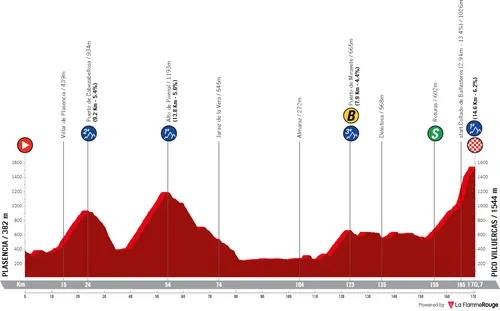
Stage 4: Plasencia - Pico Villuercas, 170.6 kilometers
The riders make their way into Spain and stage 4 will immediately be a day that is very important for the overall classification. The first mountainous day, the first summit finish and in reality an outright very hard day. Besides the expected heat that is a constant in this part of the country at this time of year, there will be 3500 meters of climbing and a very difficult summit finish. This will come as a shock to the system, and it will make it quite an interesting day where the GC riders will analyze each other and figure out exactly where they stand.
And there's no warming up to it. Right in the start of the day there are two hard ascents. One is 9.2 kilometers to go at 5.4% and the other 13.8 kilometers at 5.6%. This will end with only 54 kilometers of racing. A long descent follows and then a nice flat section - actually flat, not rolling, as was constantly the case in Portugal. With 47 kilometers to go summits the third ascent of the day which is 7.9 kilometers to go at 4.4%.
But all will be about the final climb to Pico Villuecas. 14.6 kilometers at 6.2%... But this is very misleading. The first 10 kilometers are mostly at gradients of 4 and 5%, where slipstreaming means a lot and there will be no attacks. A leadout surely will be in place into the final 5 kilometers of the climb. From 5 to 2 kilometers to go the average will be a constant 13%. This is outright brutal. In the final 2/1.5 kilometers it does come down again but the damage will be done.
Read also
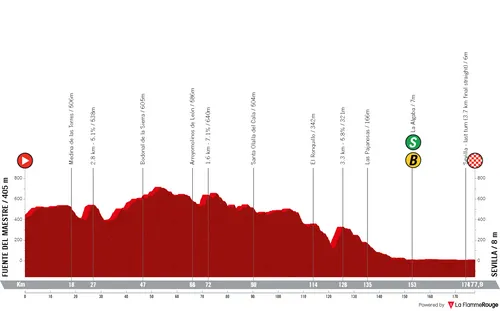
Stage 5: Fuente del Maestre - Sevilla, 177.8 kilometers
A day to resettle and reorganize. From Fuente del Maestre to Sevilla the profile won't be completely flat but the sprinters should have their way. It is a day without a categorized climb but that doesn't mean there won't be something to climb. However, there won't be anything too dramatic.
It is a transition day as the riders head south throughout the entire day, mostly in straightforward roads. With 51 kilometers to go there will be a 3.3-kilometer climb at 5.8% but it won't likely be too hard to create differences. The intermediate sprint will come with 25 kilometers to go before the pan-flat finale in Sevilla.
It is a sprint finish that features a few technical sections but still relatively far from the finish. Between 7 to 6Km to go there are a few 90-degree corners, and with 3.7Km to go a 180-degree turned which will have a positioning battle likely, specially as it's just outside the 3-kilometer rule limit. Then, a fully straightforward finale into the sprint.
Read also
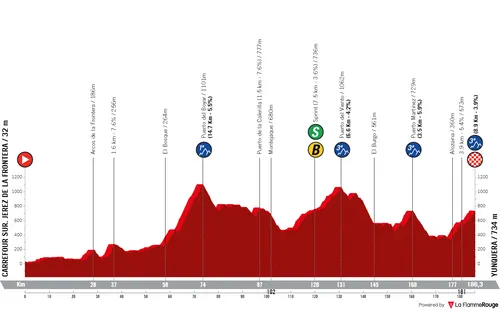
Stage 6: Carrefour Sur. Jerez de la Frontera - Yunquera, 186.2 kilometers
A traditional type of Vuelta stage. The sixth day of racing finishes in Yunquera on what is a day packed with different types of climbs. Lots of scenarios can play out whilst the slight 9-kilometer climb provides opportunities for puncheurs and climbers alike to do what they know best. A breakaway victory is also quite possible, although ironically the start of the stage is flat.
The stage actually starts inside a Carrefour supermarket which may be the highlight of the day. The first climb of the day is the hardest - 14.7Km at 5.5% - but it ends with 112 kilometers to go. Rolling roads from there onwards. The second climb is almost 20 kilometers long but with a flat middle section, it is not steep, featuring an intermediate sprint and a third category in the summit which comes with 55Km to go.
The penultimate 3.5 kilometers long at 5.9% with 26 kilometers to go. A descent and flat run-up to the final ascent to Yunquera. Not one for the climbers, not one for the sprinters... A mix of classics riders, puncheurs and GC riders will be near the front here. The climb is 8.9 kilometers at 3.9%. The most difficult is the first third, there is a small descent halfway through and the final 2.5 kilometers are mostly in gradients of around 5%. The final meters will be around the same, it makes it quite open.
Read also
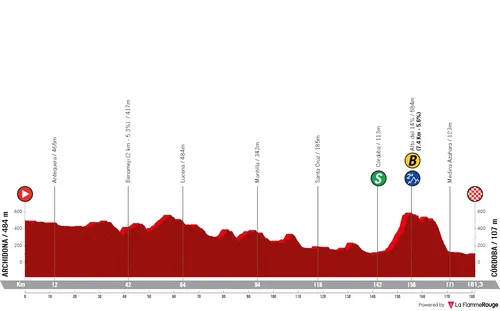
Stage 7: Archidona - Córdoba, 181.2 kilometers
Stage 7 is another tricky hilly day. Almost completely flat with the exception of the appropriately named Alto del 14%. Not a brutal climb but it provides an opportunity for attacks whilst the descent has seen spectacular attacks in the past as well before the flat finale in Córdoba.
Most of the stage truly has very little to analyze. A few tiny climbs but nothing meaningful, just a dull run-in to the city that will host the finish. Action should kick off in the climb that was made quite famous in 2011. Perhaps the descent was more memorable as Liquigas then attacked as a team with Peter Sagan winning the stage and Vincenzo Nibali winning time on the GC.
The climb is 7.4 kilometers at 6.5%. Most of the climb relatively gentle but it has a kilometer at 10% close to the summit. GC riders can make moves, but other climbers and puncheurs will have the same opportunity... The ascent summits with 25 kilometers to go and there is a plateau section that only ends a few kilometers later.
Only the final 11 kilometers are flat, there is time to put on a chase but not too much. But they will not be technical, instead just outside the city. The finale will have a slight right-hand bend but it's a very wide avenue and it will be hard to stay in front of a fast-moving peloton.
Read also
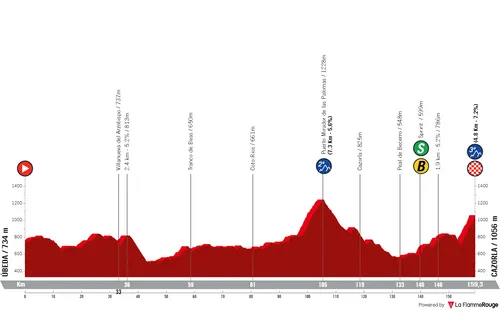
Stage 8: Úbeda - Cazorla, 159.3 kilometers
Stage 8 sees the riders go inland deep into Andaluzia for another day in the isolated and vast hills. So, not one for everyone... A land where the weather usually hits hard, but surprisingly it won't be as hilly as is usual. The first half of the stage in fact is mostly flat, and only in the second will there be some climbing.
7.3 kilometers at 5.6% will be the first climb of the day, with 54 kilometers to go. A gradual descent and then an uphill run-up to the final climb. This will be a difficult one, featuring a few uphill sections. There is a technical downhill section right into the base of the final climb where there is a very steep ramp up to 17% which means a tremendous battle over several kilometers of hilly terrain. This will make for a very hard pace already into the climb.
4.9 kilometers at 7.1%, but if there isn't an all-out attack right in the base then only expect moves in the final third. Leaving the city center the road gets more technical and steeper. The final kilometer averages 10% on a narrow mountain road, it is difficult and will be quite interesting.
Read also
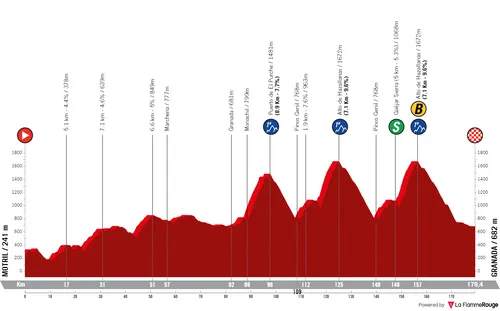
Stage 9: Motril - Granada, 179.3 kilometers
Stage 9 is the second day in the mountains and the toughest so far. It is a day with three categorized and all of them are brutal. I can't call this the queen stage because the organizers went crazy on stage 20 and also put in brutal days in the Asturias, but this is definitely a crazy hard day. The start of the stage has no categorized climb but several difficult roads where the fight for the breakaway will make it hard. But all three climbs in the second half of the stage are incredibly steep and in the hot weather... These climbs have proven to be incredibly damaging both at the Vuelta and Vuelta a Andaluzia in the past.
Alto del Purche opens things up with 8.9 kilometers at 8%. This features a downhill section in the final kilometer. Most of the climb is at 9/10% and there is, after the downhill, a very steep ramp into the summit with 81 kilometers to go. A steep and technical descent follows before the double ascent of the Alto de Hazallanas.
But there is so much to this climb that makes it ever harder than it looks on profile. The riders climb to Guejar Serra which is 5 kilometers long at 5% but it's not categorized and barely noticeable in the profile even. The second half of the climb will be ridden at full pace because there is then a short steep descent into the base of Hazallanas...
There is a very narrow bridge and on the other side is the first kilometer of the climb at 12% and with ramps at almost 20% and several switchbacks. It's a suffocating section and after a small downhill there are several more kilometers constantly above 10%. It is a gruesome climb with no place to hide and the riders will likely be at the limit from start to finish. It is less steep closer to the summit but the differences will be made before and so it won't be any easier. This will have to be done twice, with the climb summitting with 54 and 22 kilometers to go respectively.
The descent into Granada will be long and very fast. It is not overly technical unlike the climb and will leave the riders close to the finish. The final kilometers are flat but slightly downhill false-flat and so very quickly they will reach the finish line.
Read also
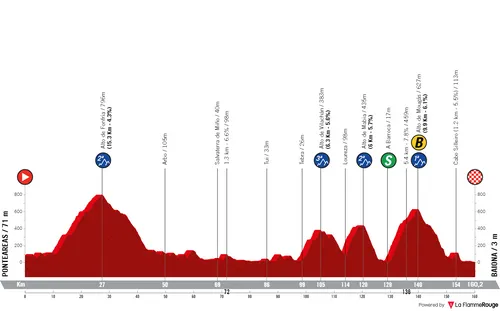
Stage 10: Ponteareas - Baiona, 160.1 kilometers
The first day of the second week sees the riders in Galicia for a day in the mountains. They won't be too difficult, but there will be a sequence of climbs that make it very likely for a breakaway to succeed. GC action is also possible on the rugged finale into Baiona. 3000 meters of climbing starting in Ponteareas and right from the first kilometers there is a tough ascent.
This will be over 15 kilometers long at 4.3%. It will be enough to form a strong group up the road surely and one with strong climbers that can resist in the finale. The riders head towards the coast then, right by the northern border of Portugal, and then reach the final sequence of climbs where the stage should be decided.
The first is 6.3 kilometers at 5.6%, finishing with 55 kilometers to go. Quickly the riders find the second ascent which is 6 kilometers long at 5.7% but the first 2 are at 9% and can see serious attacks. This climb summits with 40 kilometers to go and afterwards the descent is both steep and technical into the coast. There will only be a few kilometers until the Alto de Mougas (or otherwise known as Monte da Groba).
This climb is 10 kilometers long at 6%. Not brutal, but hard, and ending with only 20 kilometers to the finish line. The descent will be fast and with 6 kilometers to go there is still a slight hilltop where an attack for the stage win may succeed... But by the coast it will be hard for anyone to make a successful chase in what are very twisty roads.
Read also

Stage 11: Padrón - Padrón, 167 kilometers
Stage 11 is another hilly day in the region, starting and finishing in the city of Padrón. A day that features a very steep climb close to the finish where the GC contenders will be tested on more explosive terrain. 167 kilometers and 2800 meters of climbing. A hilly day but this time around with smaller ascents, that features steeper gradients.
Two small hilltops early in the day before the four categorized climbs that are evenly spread throughout the day. 10.2 kilometers at 4.2%, then a double ascent of the Puerto Aguasantas which is 5.6 kilometers long at 6% - and feature tougher gradients. They come with 85 and 43 kilometers to go. The riders tackle another hilltop right after the intermediate sprint, but the final climb still provides an opportunity for big differences.
Puerto Cruxeiras is 2.8 kilometers long at over 9%, The climb summits with 8 kilometers to go and it features ramps above 10%, right up to the summit. The stage should be decided on this climb if it is in the breakaway... In the GC fight attacks may certainly come in an explosive challenge. The riders go downhill almost all the way to the finish line so it's almost impossible to close gaps.
Read also

Stage 12: Ourense - Esación de Montaña de Manzaneda, 137.1 kilometers
Stage 12 is an interesting day, with 'rompe-piernas' roads all day long - plenty small ascents but none are actually categorized - and then a long but shallow summit finish. The short 137-kilometer long stage doesn't really allow for a relaxed day for anyone, but the stage will only be decided on the final climb to the Estación de Montaña de Manzaneda.
Lots of small climbs but the final one is quite more important. But how will it play out? 15.9 kilometers at 4.7%, featuring a few flat sections... The gradients only go above 10% right in the final kilometer which is it's hardest. For the GC riders there should be a group ride to the finish but the final sprint may see a few seconds created.
If the victory goes to the breakaway it is a good question where the winning attack may come. The final kilometer or possibly the longer section in it's middle with 6/7% gradients. The amount of flat sections and slight gradients makes it very tactical because of the importance of slipstreaming.
Read also
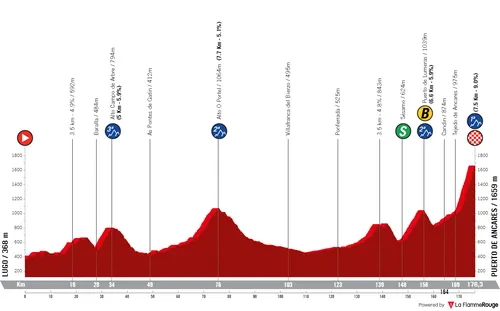
Stage 13: Lugo - Puerto de Ancares, 176.2 kilometers
A brutal day of racing, but only the first of 4 in the Asturias. Stage 13 starts in the city of Lugo but heads deep into the mountains and features a summit finish on the very steep Puerto de Ancares. A return to the high mountains with one of the Asturias' most famous mountains. There are a few ascents early in the day that allow for some strong riders to go up the road. No rolling roads but instead just flat between the climbs.
5Km at 5.9% and 7.7Km at 5.1% do the warm-up. Late in the day two smaller climbs lead into the final one. They are 3.5Km at 4.8% (37Km to go) and 6.6Km at 5.9% (20Km to go). Only a small descent before a false-flat run-in to the final climb. So the riders already enter Ancares with some slight uphill gradients, before going into the real hard gradients.
The average gradient of the climb is very high but it's still harmed by the first two kilometers that are really not. Instead, we can say that the final 5 kilometers average 11%, with a few hairpins. The final 2 kilometers specially are even steeper than that... It's one of the many hard summit finishes in the race and one where big gaps are expected.
Read also

Stage 14: Villafranca del Bierzo - Villablino, 200.7 kilometers
Stage 14 is an interesting day in the mountains Certainly one for the breakaway, but it does feature a climb where a lot can happen. It is the longest stage of the race and the only one that goes above 200 kilometers. Well, only by a few meters; race organizers really tried to make it a short route and so this day somewhat stands out from the rest. On the menu a day in the mountains but quite an unusual one. A mostly flat start and without any serious climbing until the final kilometers.
Before the finale in Villablino, the peloton tackles the ascent of Leitariegos which is 22.8 kilometers long at 4.5%. The climb ends with just until 17 kilometers to go, it is very constant at a 4/5%, so the riders will be in the big-ring all the way to the summit. This means that despite it's length it's not necessarily one for the climbers - puncheurs and rouleurs can also win here. The high speeds mean this will be a tactical climb and timing can be very key.
Only the final 3 kilometers are going to be flat. There is a descent all the way to there, but actually the final sprint will be relatively uphill which can be interesting if it comes down to one.
Read also
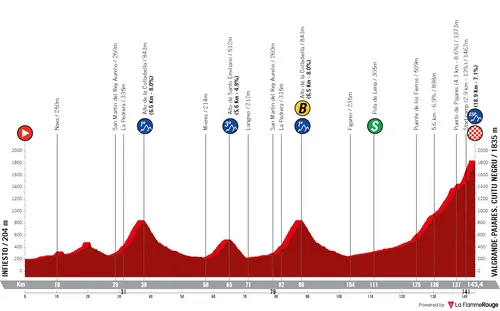
Stage 15: Infiesto - Cuitu Negru, 143.3 kilometers
3800 meters of climbing in 143 kilometers make up the bulk of the 15th stage, the last day of the second week in the race. A day with a flat start but with a finale that is the absolute opposite. We have a double ascent of a tough Asturian climb that will warm up the climbers for the action later in the day.
Two ascents of the difficult Alto de la Colladella which is 6.5 kilometers long at 8%. Three kilometers average almost 10% and the climb will be topped with 105 and 56 kilometers to go. But with what is to come in the final climb, there likely won't be any serious moves here. It is going to be used to add to the leg pain in the final climb.
The summit finish at Cuitu Negru was used only once back in 2012 and it is one of the hardest in pro cycling. 19 kilometers at 7% but the final kilometers feature inconsistent gradients, and the ramps go above 20% on several occasions including up to the finish line. This climb is horrific, climbing the Puerto de Pajares but then taking on a climb to the ski station in the final kilometers.
It is difficult for the profile to even capture the brutality. The gradients go up to 24% and are above 20% on several locations. It's outright going up the mountain directly at the top of a very long climb and hard stage. Massive gaps can be created and this day could also see a few riders lose serious time.
Read also

Stage 16: Luanco - Lagos de Covadonga, 182 kilometers
The third week starts with the final day of high mountains in the Asturias and it doesn't get any easier. Three difficult steep climbs and the last of which is the famous Lagos de Covadonga. There are 4000 meters of climbing here it's another day that can be key for the overall classification, as the peloton will be saying goodbye from the Asturias. Early in the 182-kilometer long stage there aren't big climbs but they are present, as always...
The Mirador del Fito opens things up serious for the day, it is 7 kilometers at 8% and summit with 104 kilometers to go. Shortly after the Alto de Bada adds a little more damage. But the peloton will eye the Collada Llomena which is the steepest climb of the day. The ascent is 7.5 kilometers long at 9.4%, incredibly steep and constant. It summits with 56 kilometers to go. Then it is all the way down to the final climb.
The final climb is 12 kilometers long at 7% but it is important to note that there are several flat and downhill sections in the final kilometers that lower the average. The first 8 kilometers average 9% and are very difficult. From there on there are some resting bits which lead to a more explosive section where attacks can also be launched.
Read also
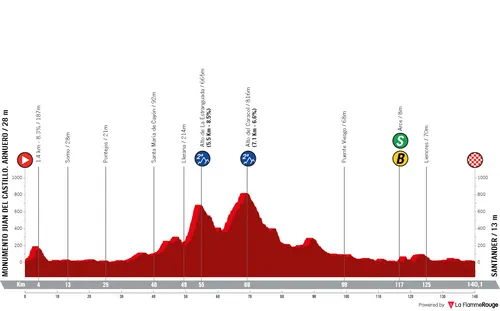
Stage 17: Arnuero - Santander, 140.1 kilometers
On paper this is the final opportunity for the sprinters but in traditional Vuelta style, they will have to climb a lot to be able to contest for victory. A very short stage with an uphill start, it favours the breakaway's chances. In the first half of the day there are two difficult categorized climbs to tackle before the final flat run-up to Santander.
Right at the start 1.4 kilometers at 8.3% which make it hard to control... Only 140 kilometers on the stage which means the pace should be high all throughout and controlling a breakaway won't be easy. Because after that tough start there are two ascents that are legitimately difficult by all standards. 5.5 kilometers at 8.5% summiting with 85 kilometers to go. Then another 7.1 kilometers at 6.6% that end with 71 kilometers to go.
From there on it does soften up. The rest of the stage is mostly flat. It is actually not very technical, not very rolling, just an overall calm finale where it is possible to put in an organized chase after what could potentially be a chaotic first half of the day. The finale is not technical at all.
Read also
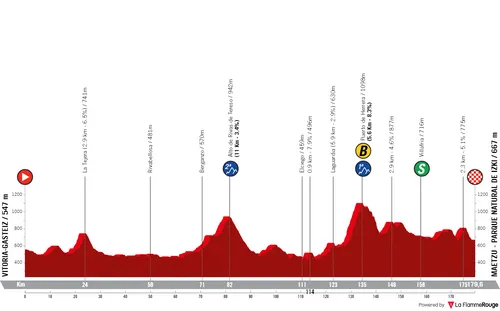
Stage 18: Vitoria-Gasteiz - Maetzu - Parque Natural de Izki, 179.5 kilometers
A day in the hills but it's quite difficult to predict a winner. The breakaway have terrain to thrive here, the whole day is hilly and the final half features several climbs of different lengths where we can expect explosive racing. The start of the day features two small climbs, the second of which 2.9 kilometers at 6.5%... The 179 kilometers feature a lot of climbing and most of it is in the final third.
The main climb of the day is a first category and also has bonus seconds at the top. The Puerto de Herrera is 5.6 kilometers at 8.3% and summits with 44 kilometers to go. The climb is steep and hard enough for the pure climbers to really make a difference. Closely after 2.9 kilometers at 4.6% that end with 33 kilometers to go.
The road flattens out after and in the final 15 kilometers rise again. Most notably, the final 3 kilometers are downhill after tackling a 2.3 kilometers at 5.1% where the gradients go up to 9%.
Read also

Stage 19: Logroño - Alto de Moncalvillo, 173.9 kilometers
The riders head east and stage 19 is an unusually flat day on the bike. That is, until the summit finish to the Alto de Moncalvillo. Somehow this may actually be one of the calmest days for the Vuelta peloton who won't have to tackle a bunch of small hilltops all day long. There will actually be flat roads, and most riders can take the final climb at a slow pace. The GC riders will have to go to the limit however.
The final ascent is 8.6 kilometers long at 9% and is difficult enough to create big differences. Some tight bends and very high gradients from start to finish. It's a relatively constant climb and it's hard enough for big gaps. With the riders fresh at the base, it could even increase the chances of destructive attacks.
Read also
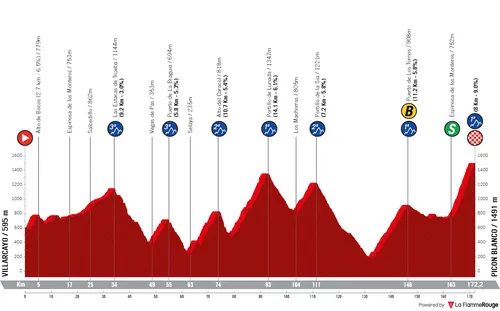
Stage 20. Villarcayo - Picón Blanco, 172.1 kilometers
The queen stage is the final one in the mountains. Vuelta organizers went crazy with this one, packing in 5000 meters of climbing in only 172 kilometers. It will be in Burgos that the race will be decided. Seven categorized climbs after an uphill start and the summit finish at the very hard Picón Blanco. The stage was designed to have this amount of climbing in as least distance as possible.
We will see the following climbs:
Alto de Bocos - 2.7Km; 6.6%; 5 kilometers of racing
Las Estacas de Trueba - 9.2Km; 3%; 134Km to go
Puerto de la Braguia - 5.8Km; 5.3%; 117Km to go
Alto del Caracol - 10.7Km; 5.4%; 98Km to go
Portillo de Lunada - 14.1Km; 6.1%; 79Km to go
Portillo de la Sia - 7.2Km; 5.8%; 61Km to go
Puerto de los Tornos - 11.2Km; 5.8%
This will all be preparation however, likely. The final climb is hard enough to create serious damage and so most riders will look to not hit the wind until then. But many will struggle a lot, that is certain, regardless of their climbing quality. The final climb to Picón Blanco is 8 kilometers long at 9% but it's in my opinion even harder than what it suggests. It's a climb comparable to the early part of Mont Ventoux - very steep, constant and without any turns to break the monotony. It's just a pure climbing effort with nowhere to hide.
Read also
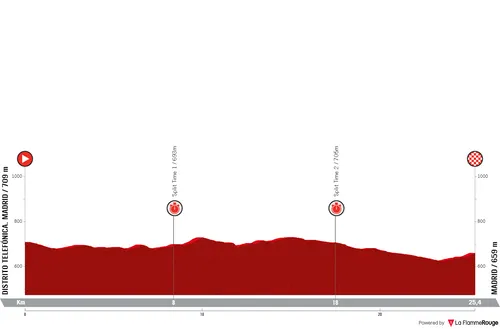
Stage 21 (ITT): Madrid - Madrid, 25.4 kilometers
The race ends in Madrid again this year but not with a stage suited to the sprinters. Instead, there will ne a 25-kilometer time-trial where the GC contenders will have their final battle for the overall classification.
The time-trial is not completely flat but there isn't anything too difficult. A few rolling gradients... And the final kilometer will rise at a 2% average gradient, there is an argument to saving the legs a little for the finale which could be decisive for the stage win.
Read also
claps 0visitors 0
Just in
Popular news
Latest comments
- Young Del Toro seem to have dealt with pressure exceptionally well last year. The Maglia Rosa lose last year was due to tactics, not pressure. It was a former young team mate of his (whose name rhymes with Caruso) who time and again didn't cope well. It's very reasonable to use Isaac as a super domestic for Tadej in TDF and avoid yet another leadership friction in the Giro. UAE team could have been honest about it, when the main reason is seemingly clear. Nothing wrong about it.BM08-01-2026
- „We’re not asking anything of him, except that he’s there.“ … what was the problem with Ayuso then?Ketterechts08-01-2026
- What an overtly bias story!whit2pet08-01-2026
- The result at the TDF is independent of whether he rides Giro or not. 2nd at the TDFabstractengineer08-01-2026
- I wouldn't write them off for monuments any more than I would write off everyone competing against MVDP and Tadej. These two are the only clear favorites, but, if something happens Quick- Step has as good a chance as anyone.mij08-01-2026
- look at Remco and Egan. careers cut short if not permanently changed due to offseason crashes on the road. crashes happen, sadly, and being in competition does not make it any more or less likely.mij08-01-2026
- Makes sense. Finally got the Giro monkey off his back. Got a stage in all three GTs. He's never going to win the Tour, and probably isn't super fussed about fighting the young guns for leadership at other stage races. Why not just go out on a high?antipodeanpedalfan08-01-2026
- Everyone begins and ends life the same way. It's what we do in the middle that counts.paule08-01-2026
- Fact check false: I've crashed indoors before.acem8207-01-2026
- I'm wondering if he's quitting because Visma wouldn't make him their #1 at this year's Giro, which he believed suited him well. As defending champ he deserved his team's backing. After all, he's done a lot for Vingo.velodan07-01-2026
Loading
Who´s next ⁉️🤔 ¿Quién será el siguiente? 👀 #LaVuelta24
Write a comment

